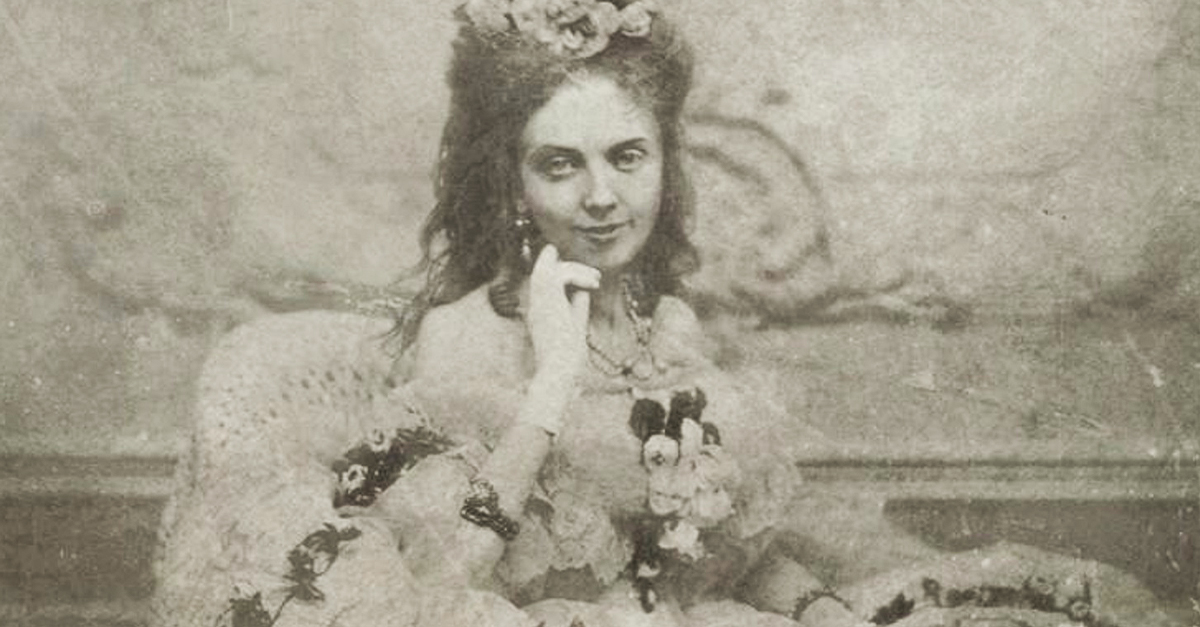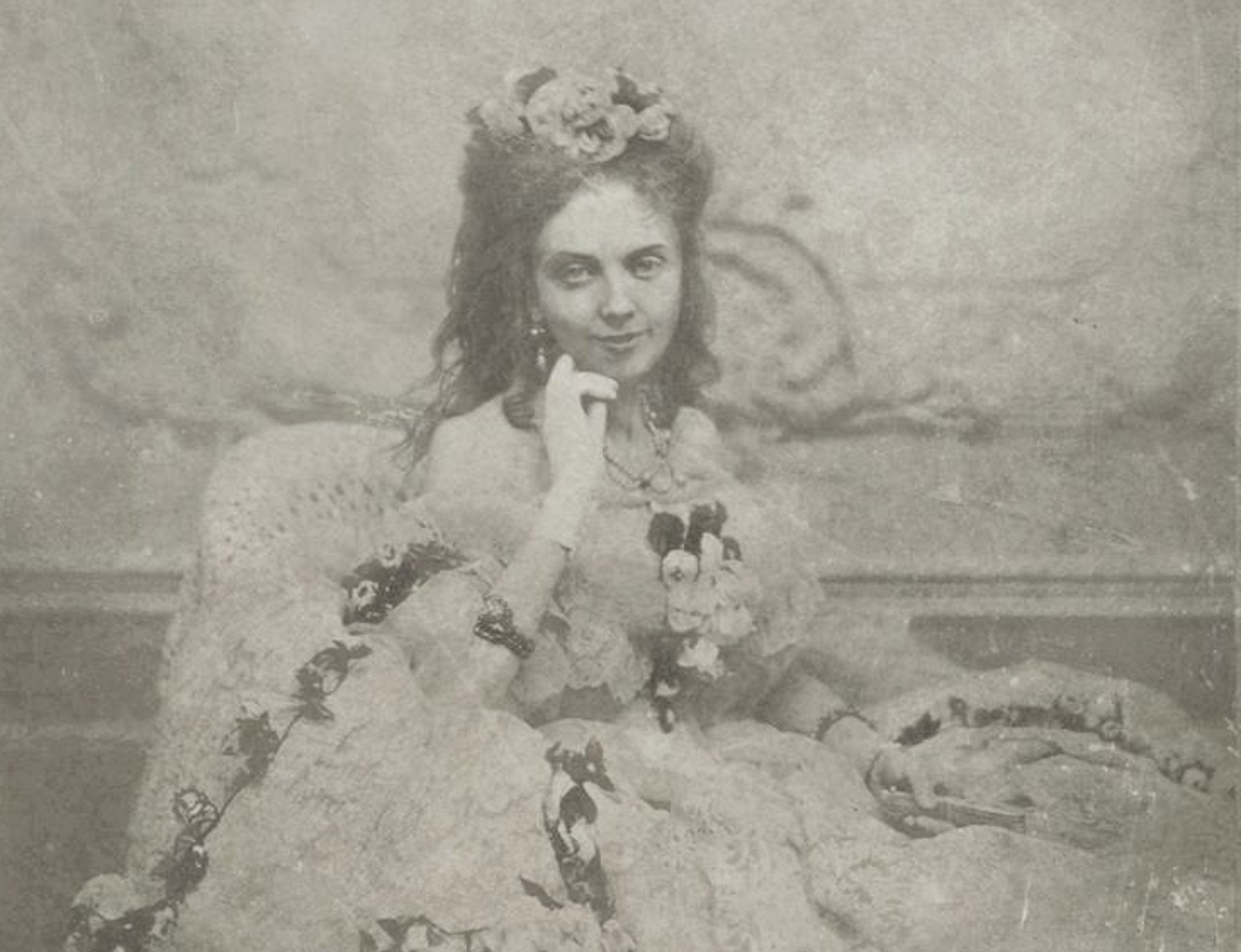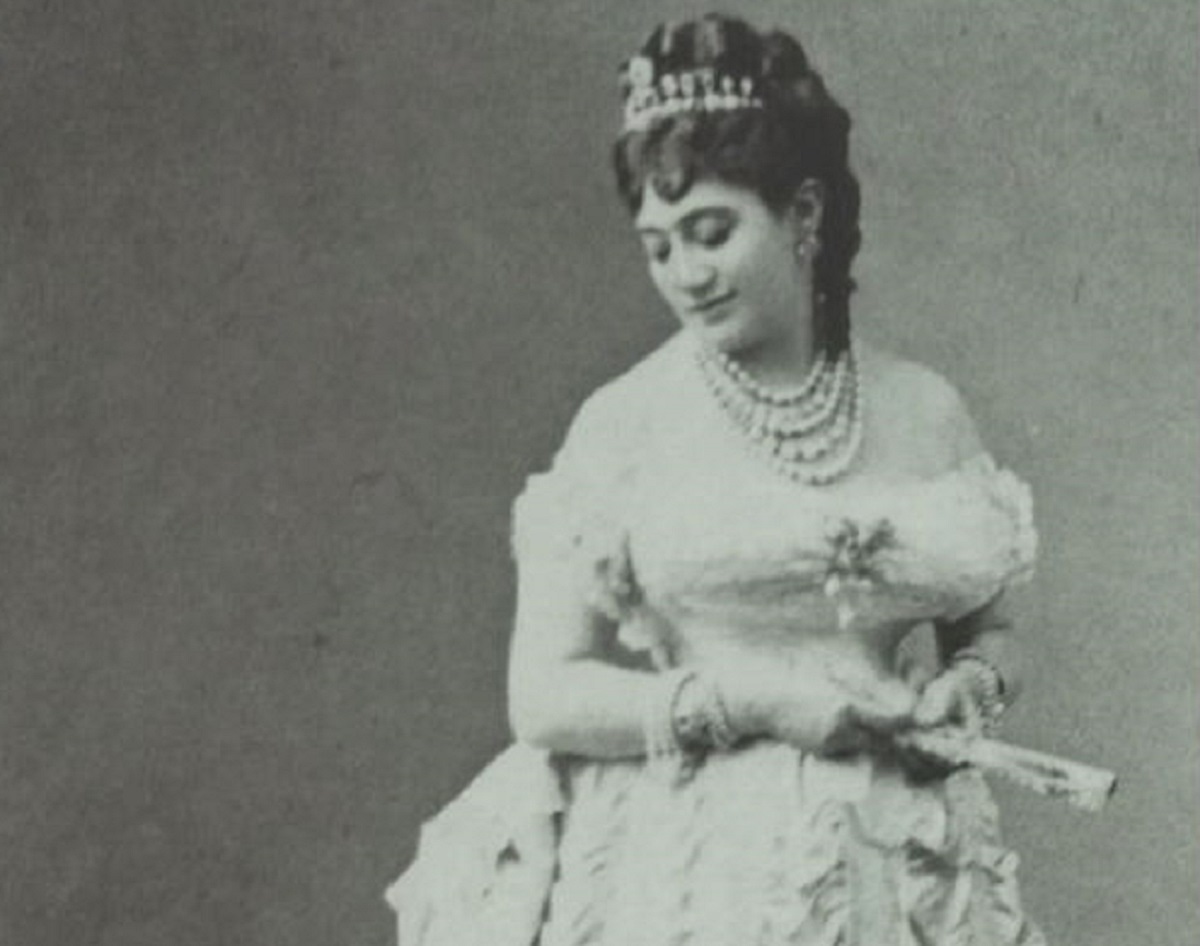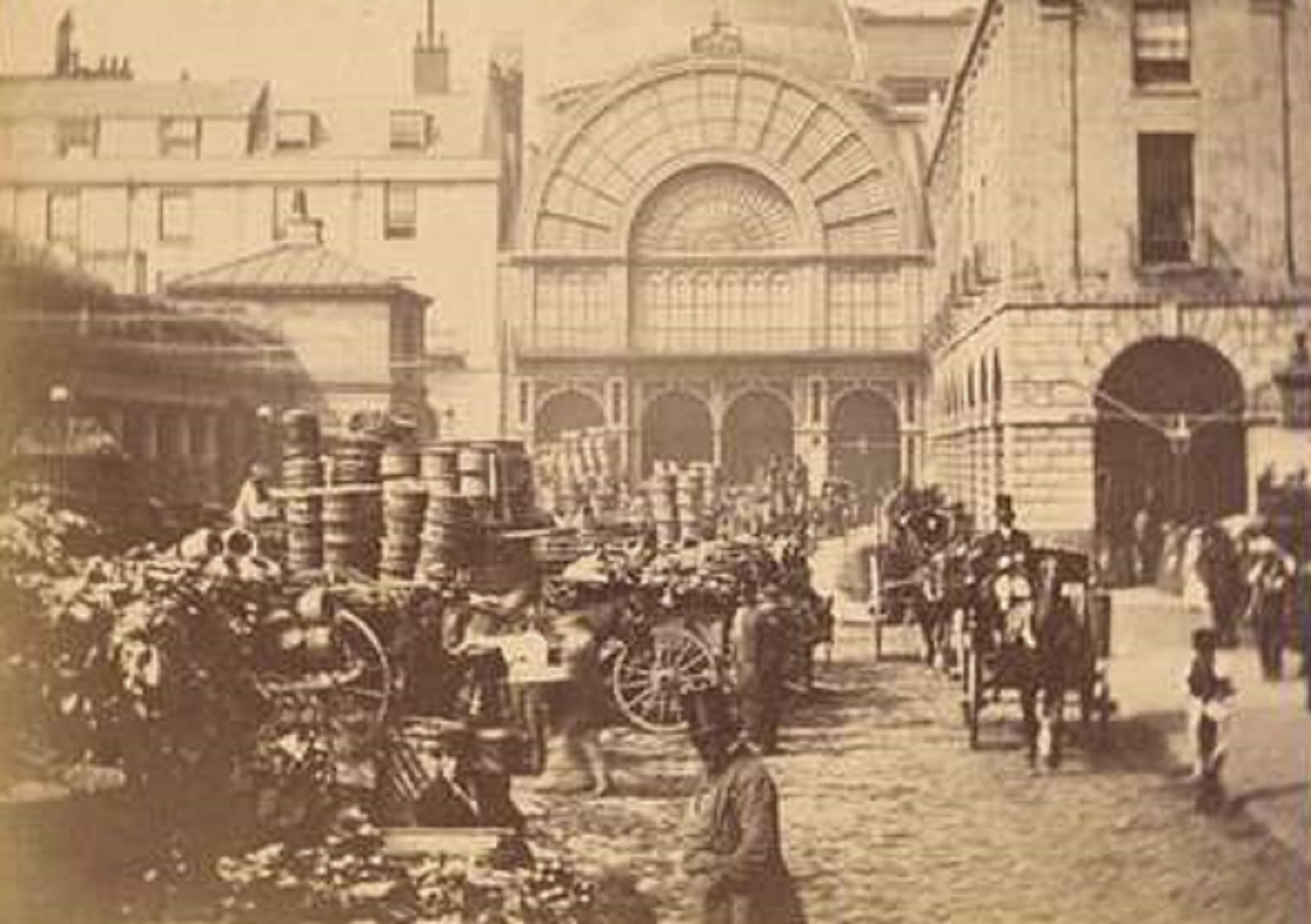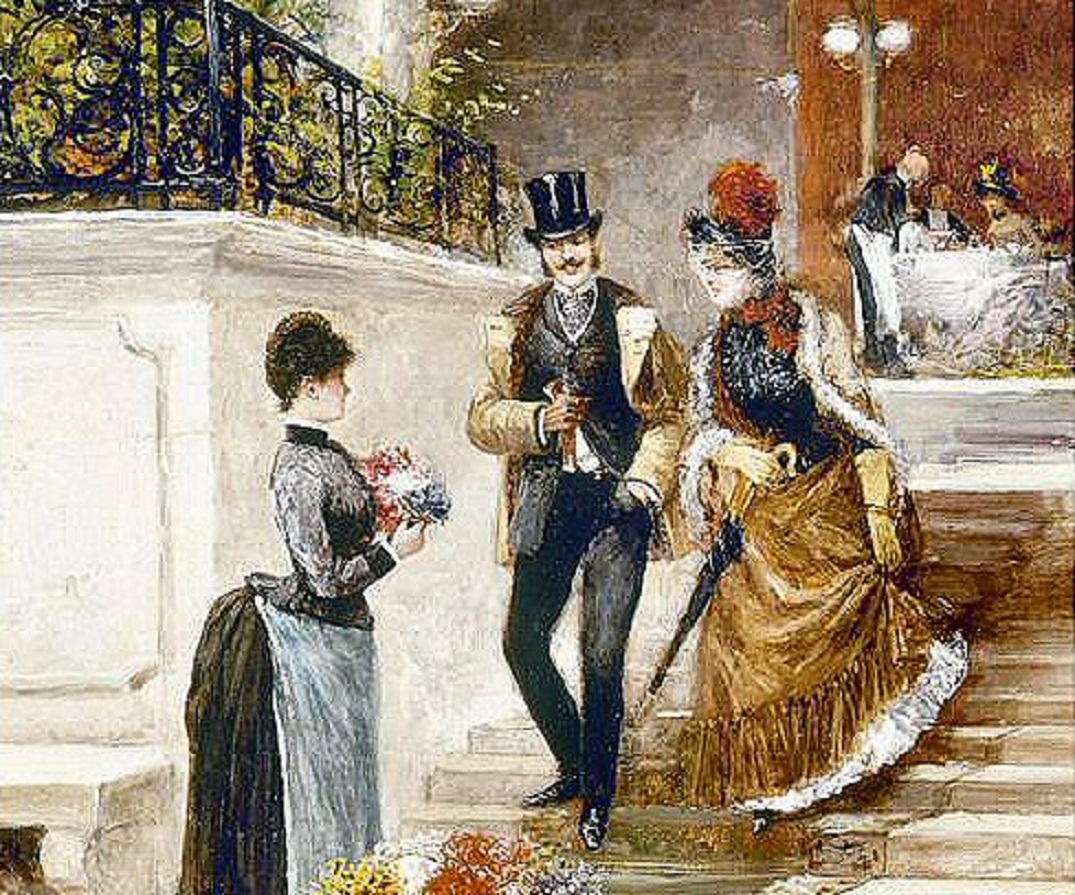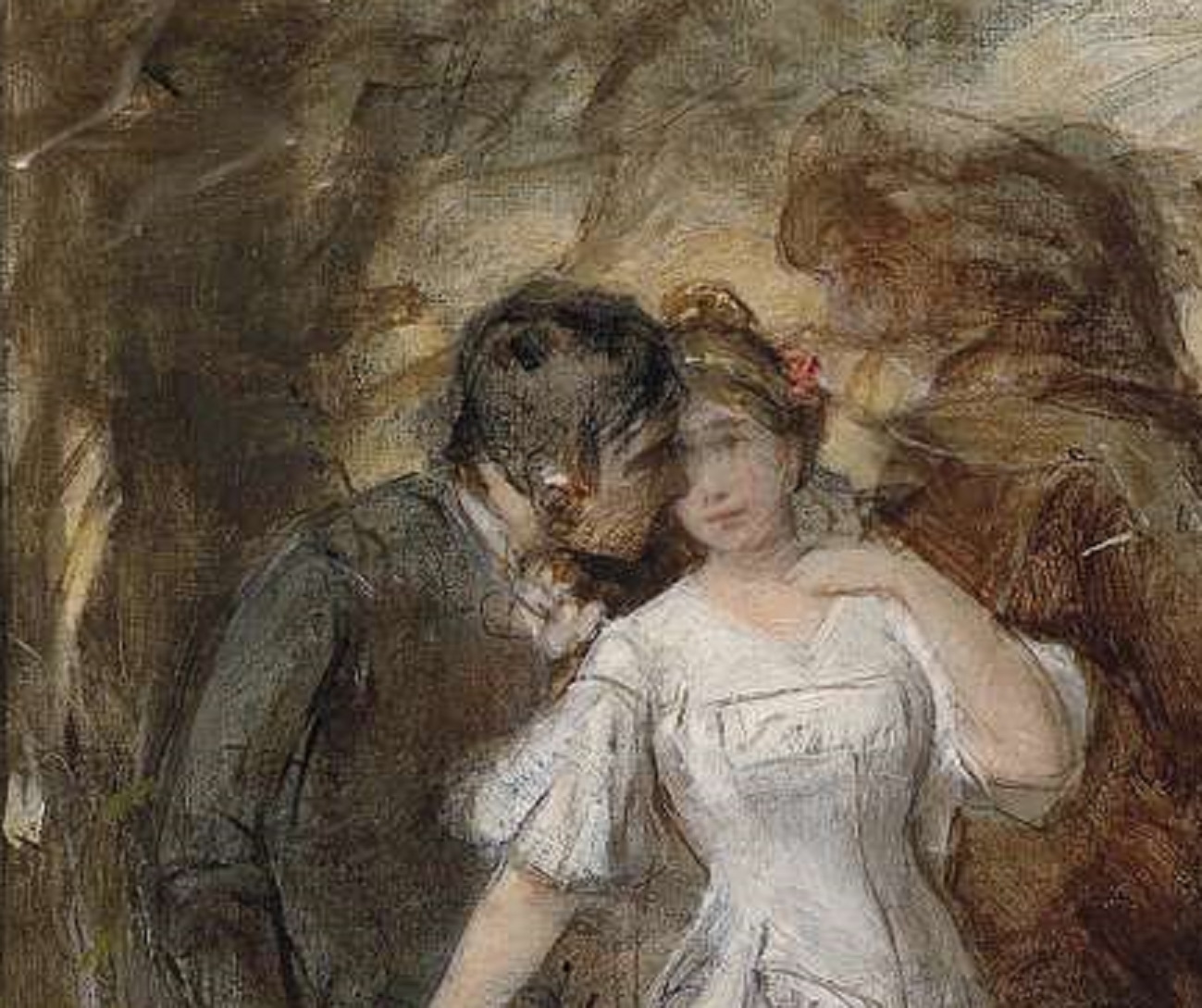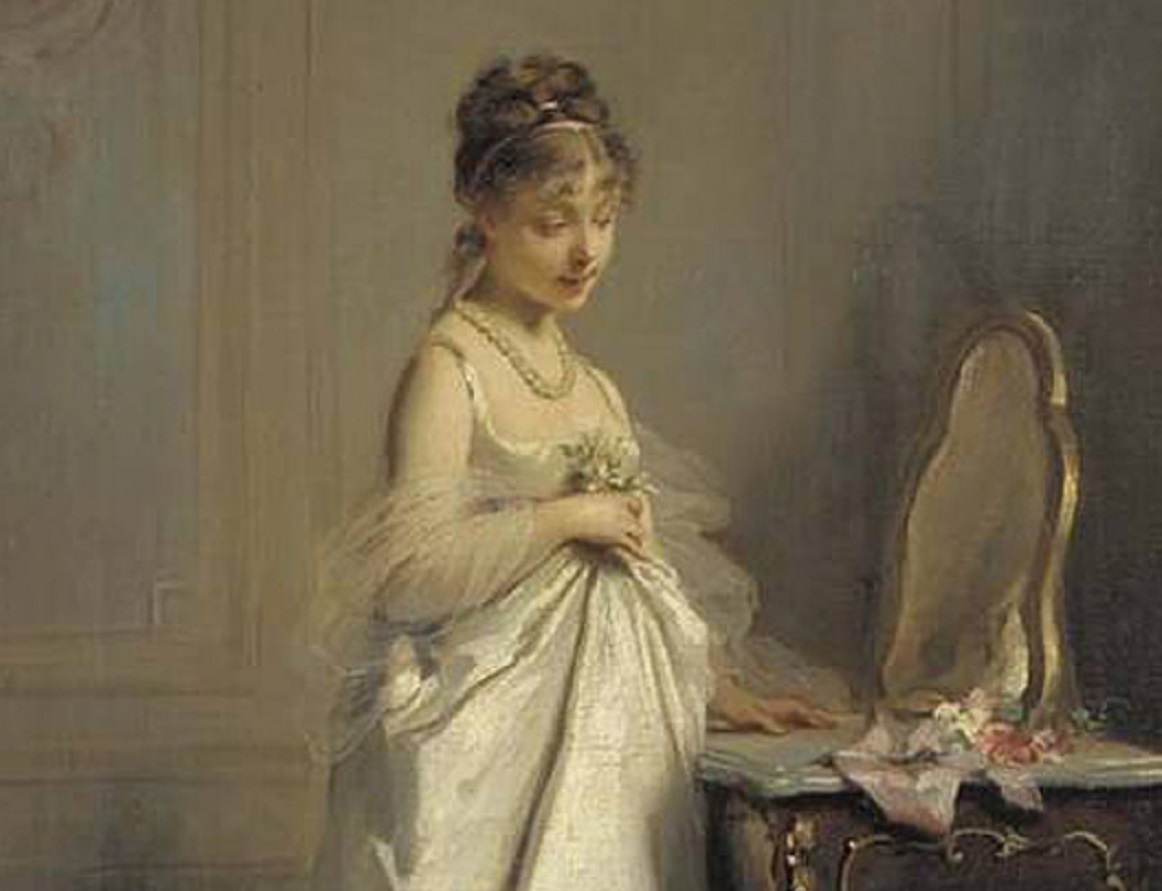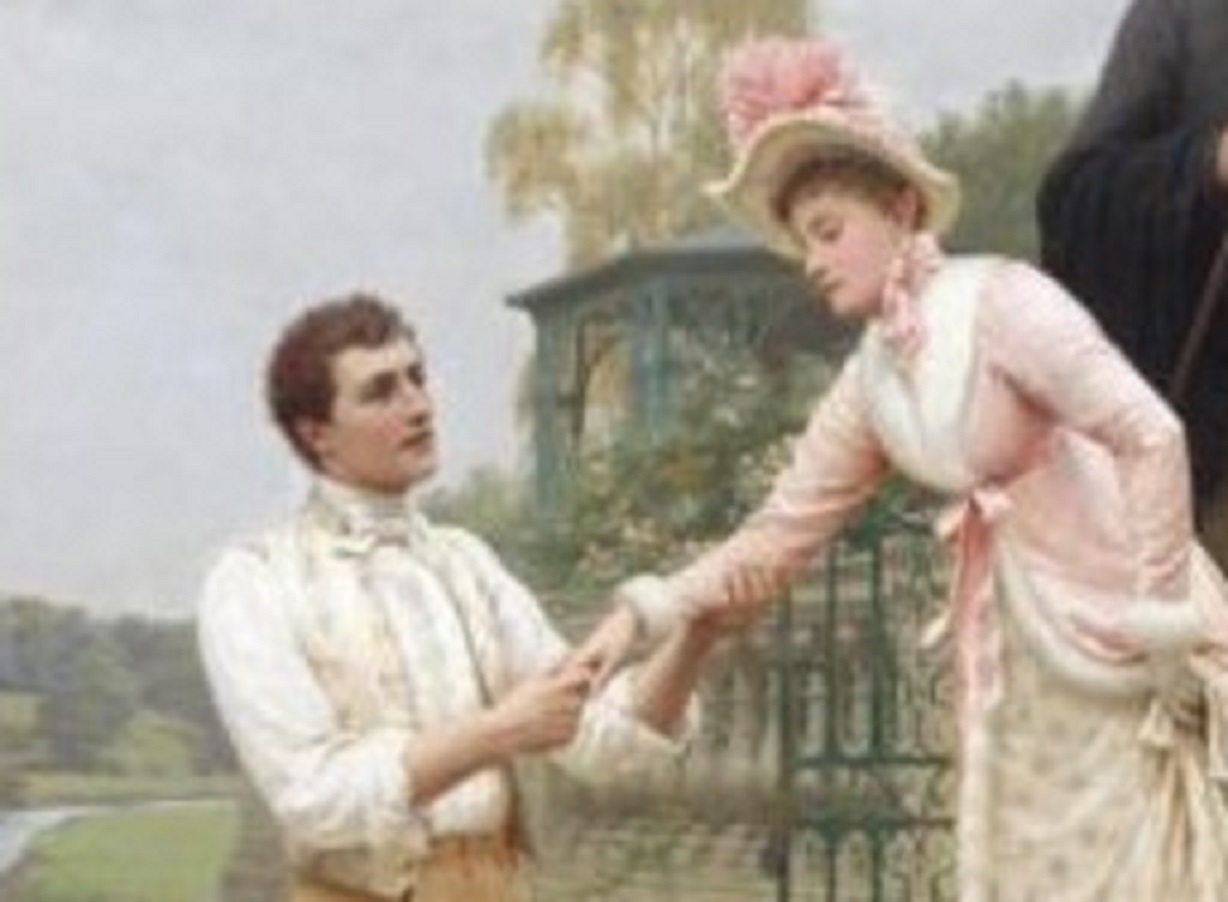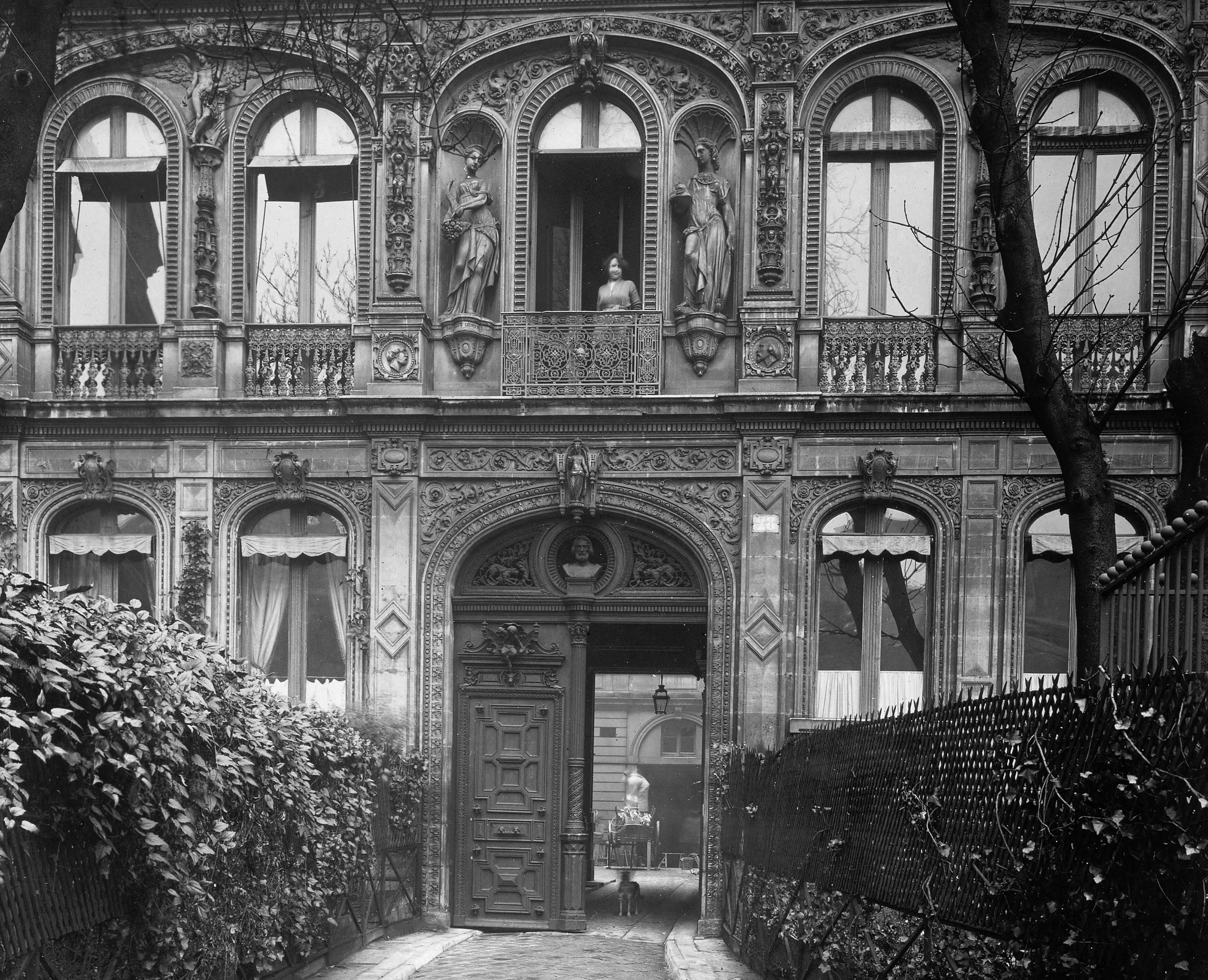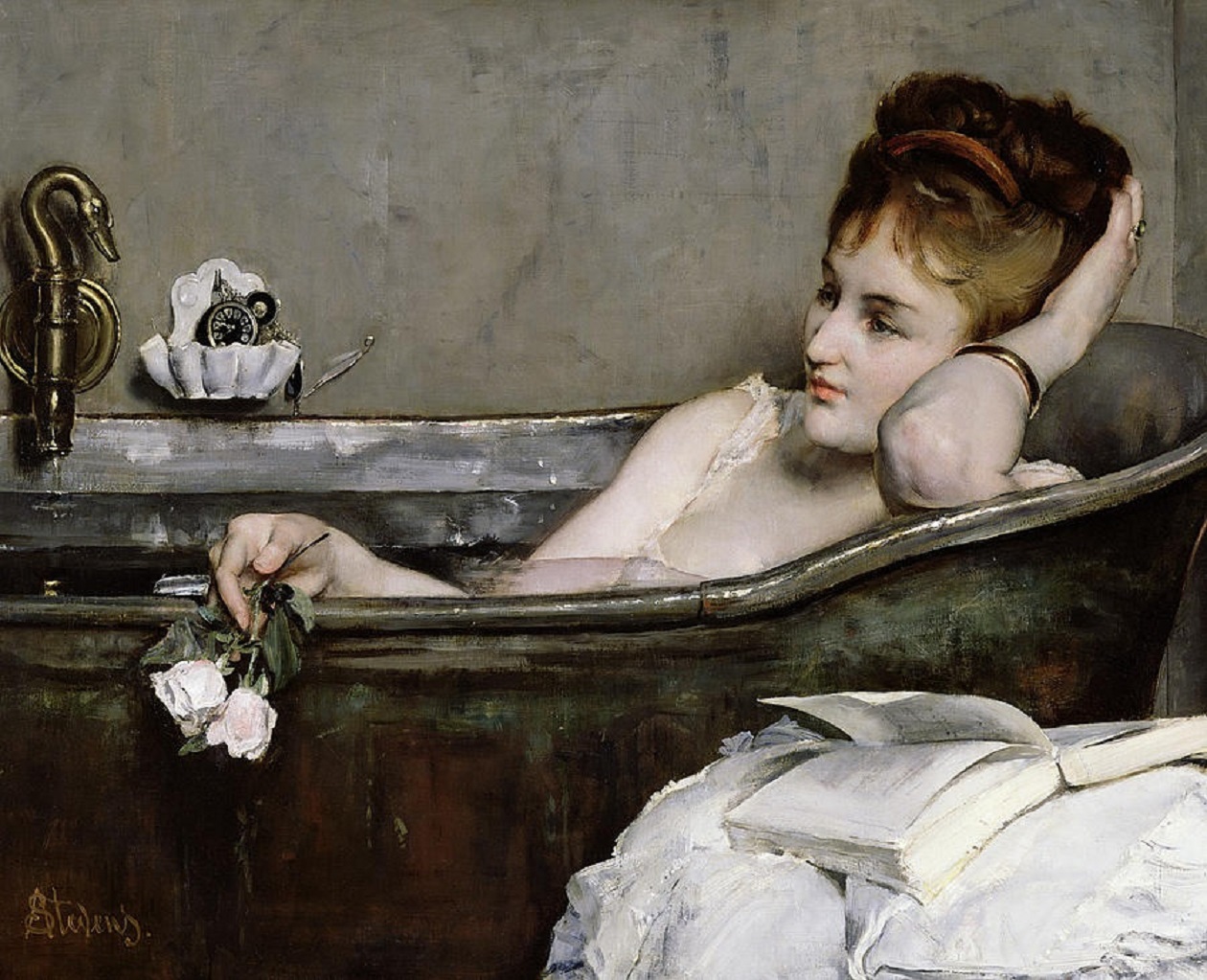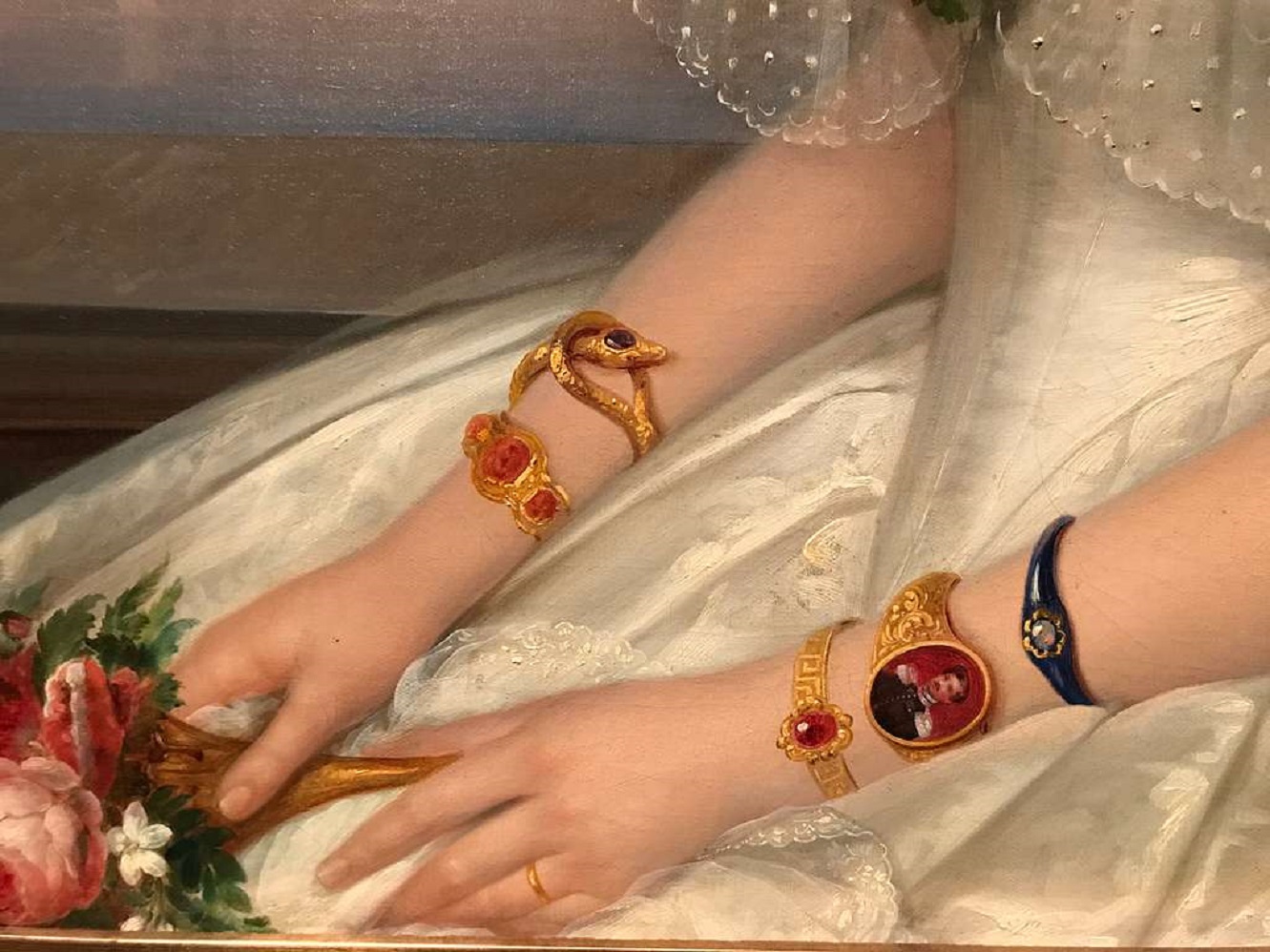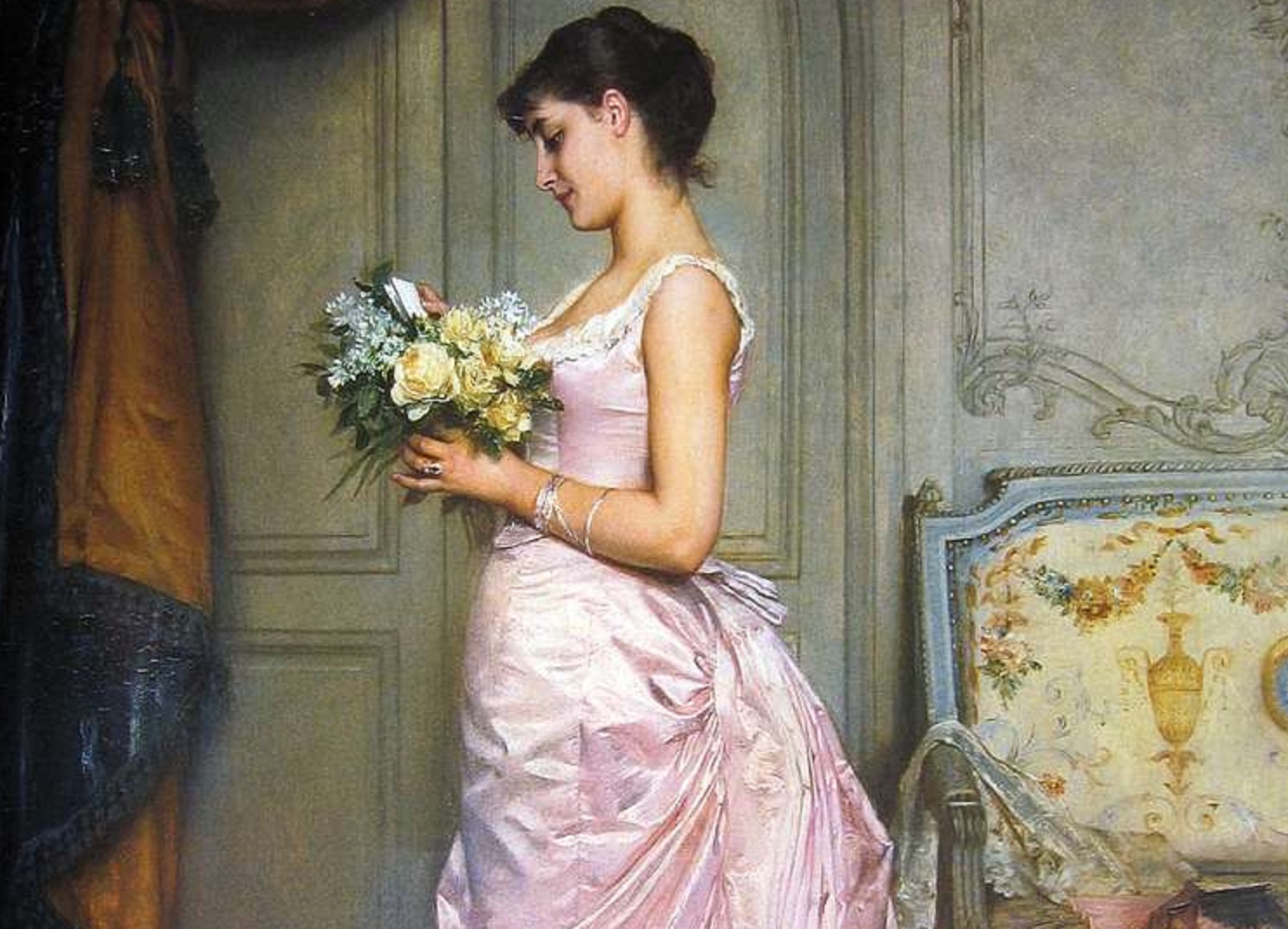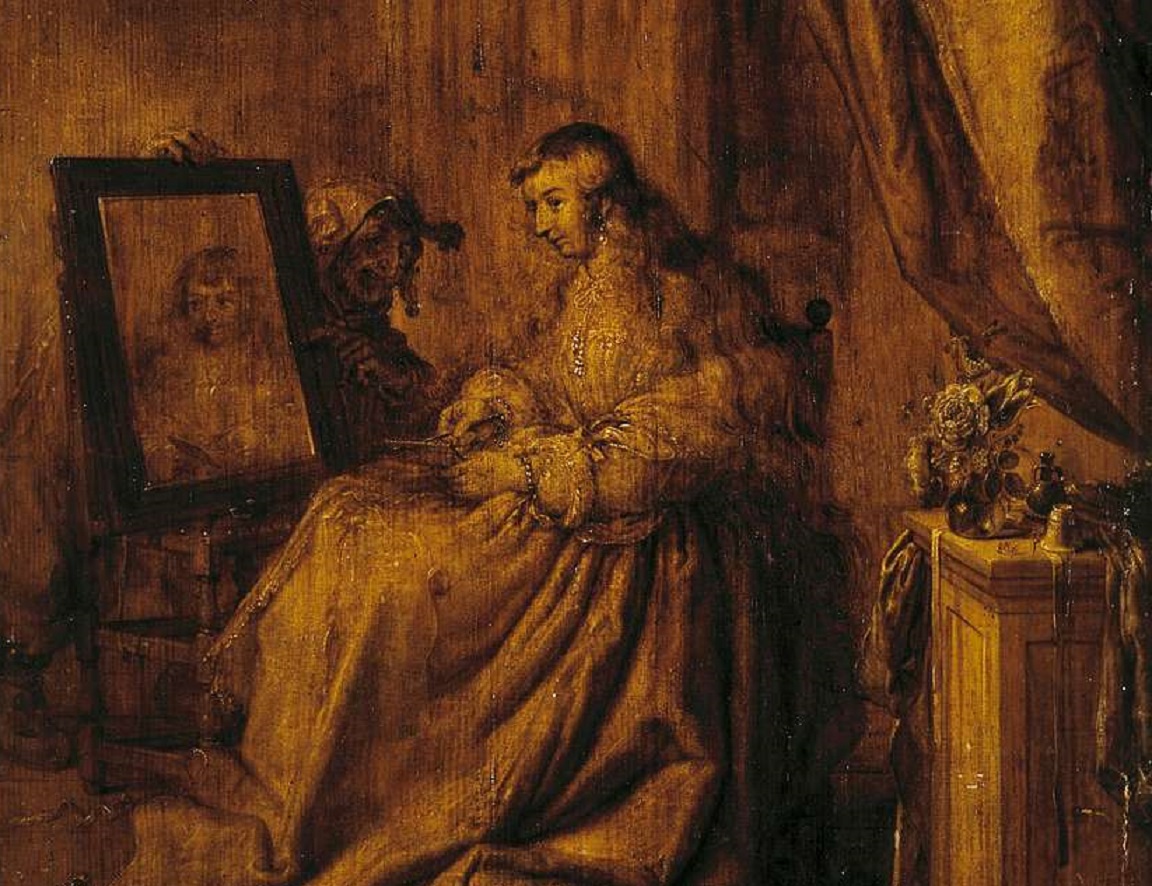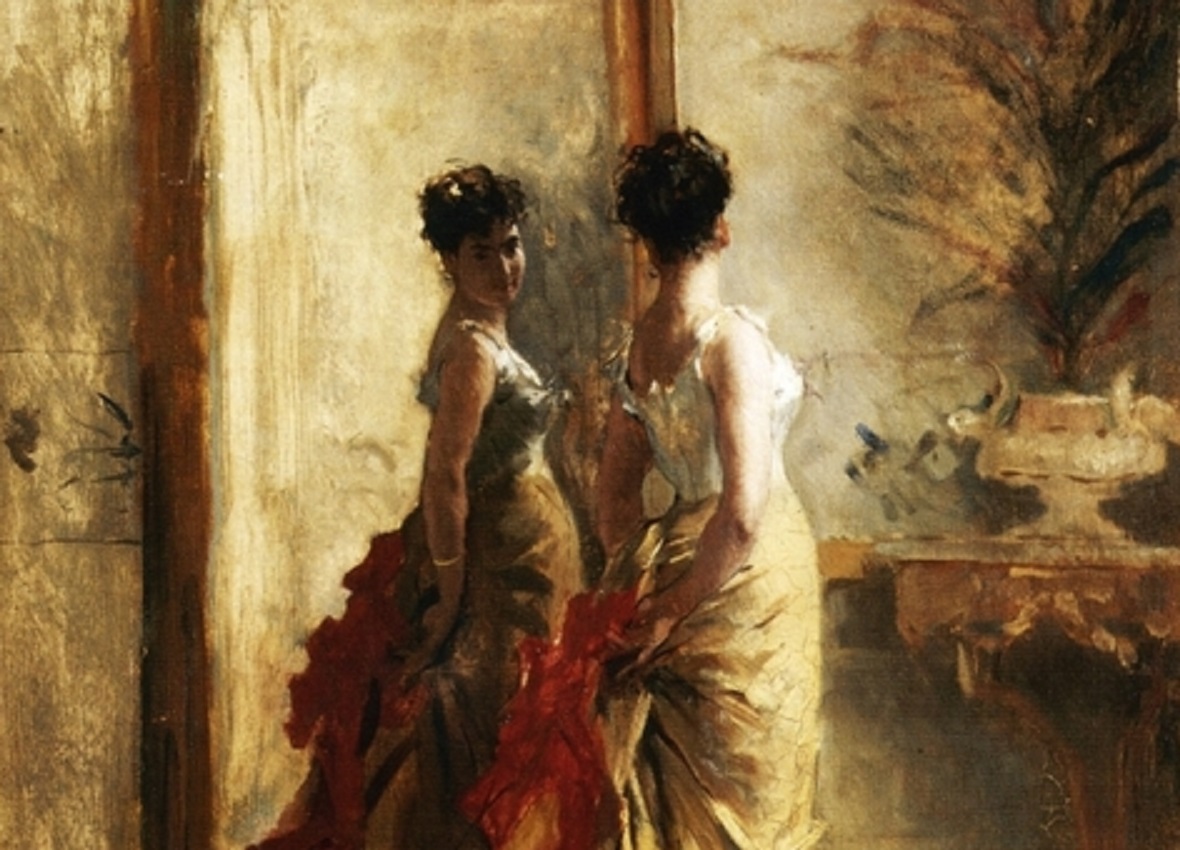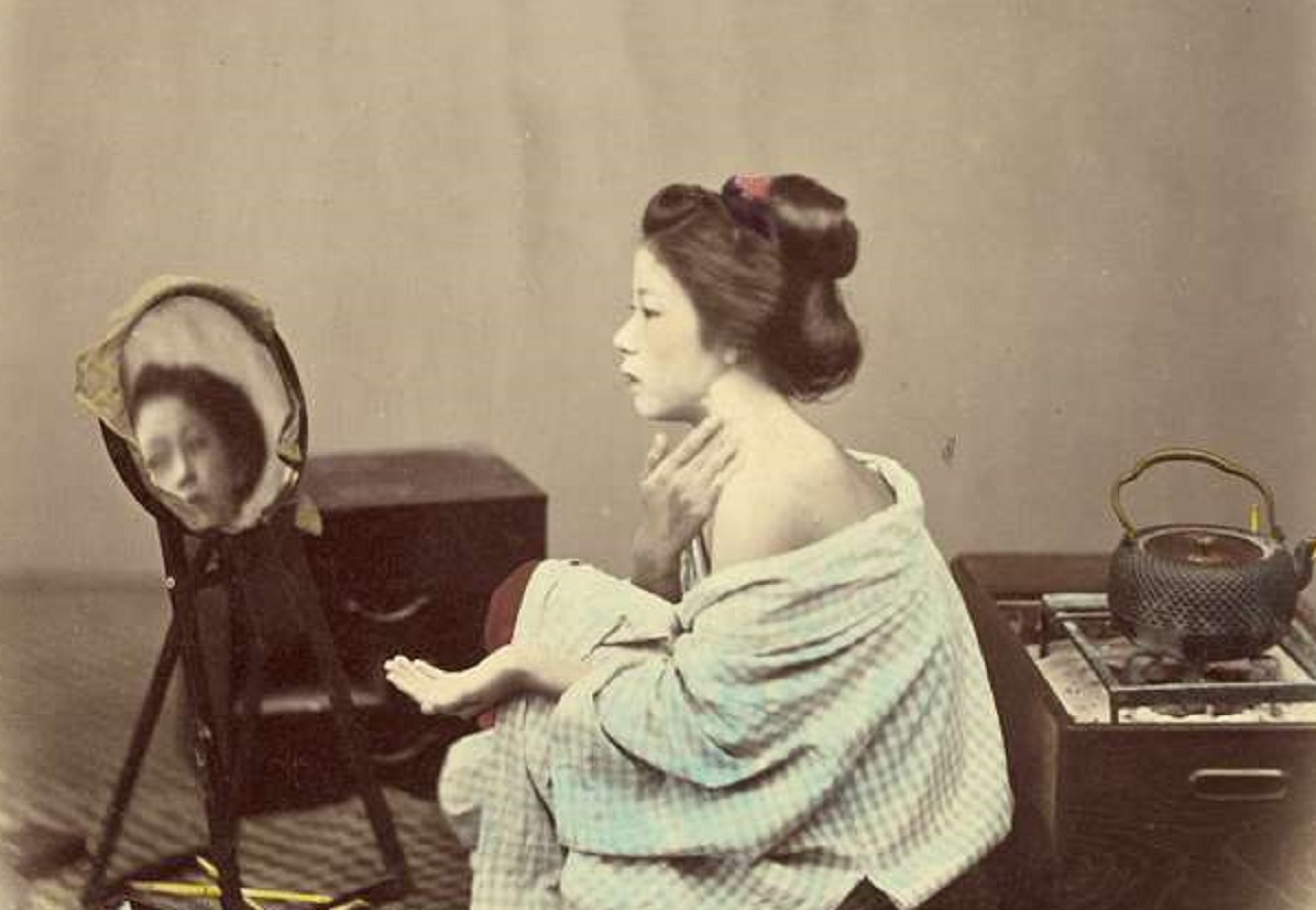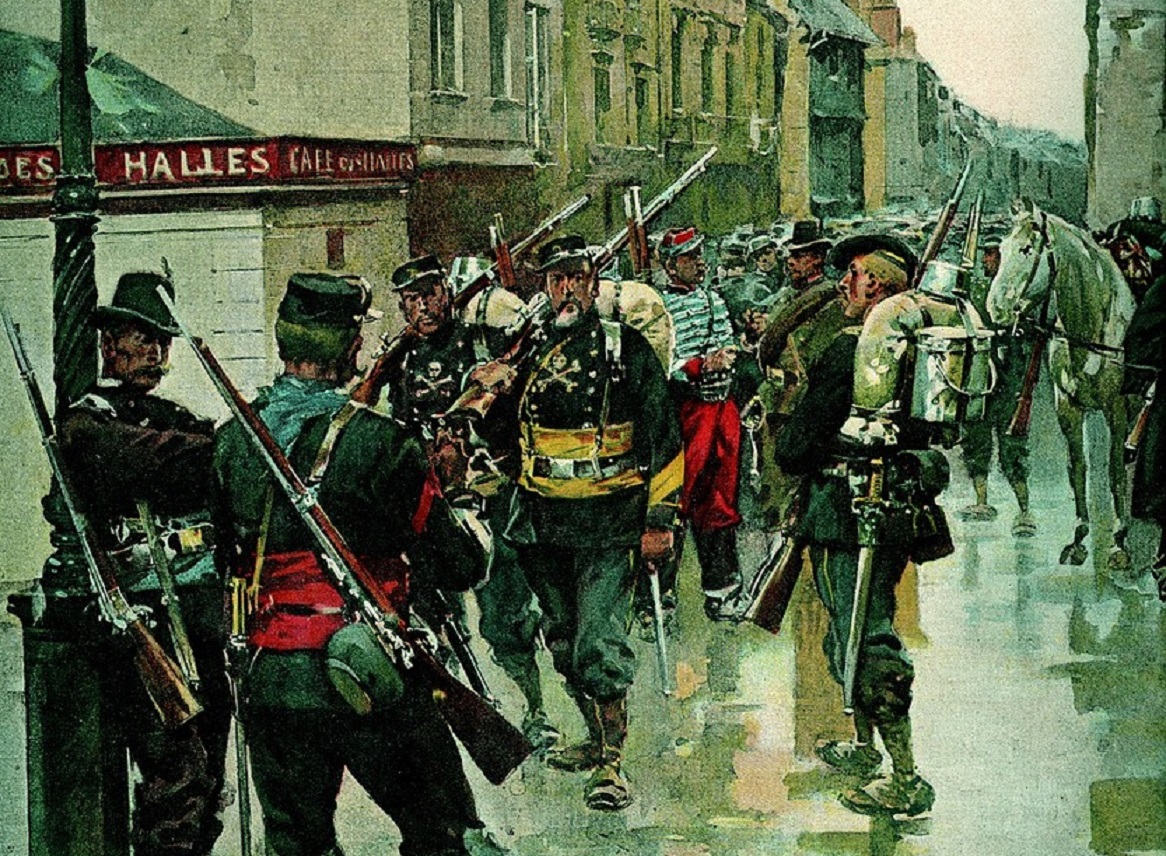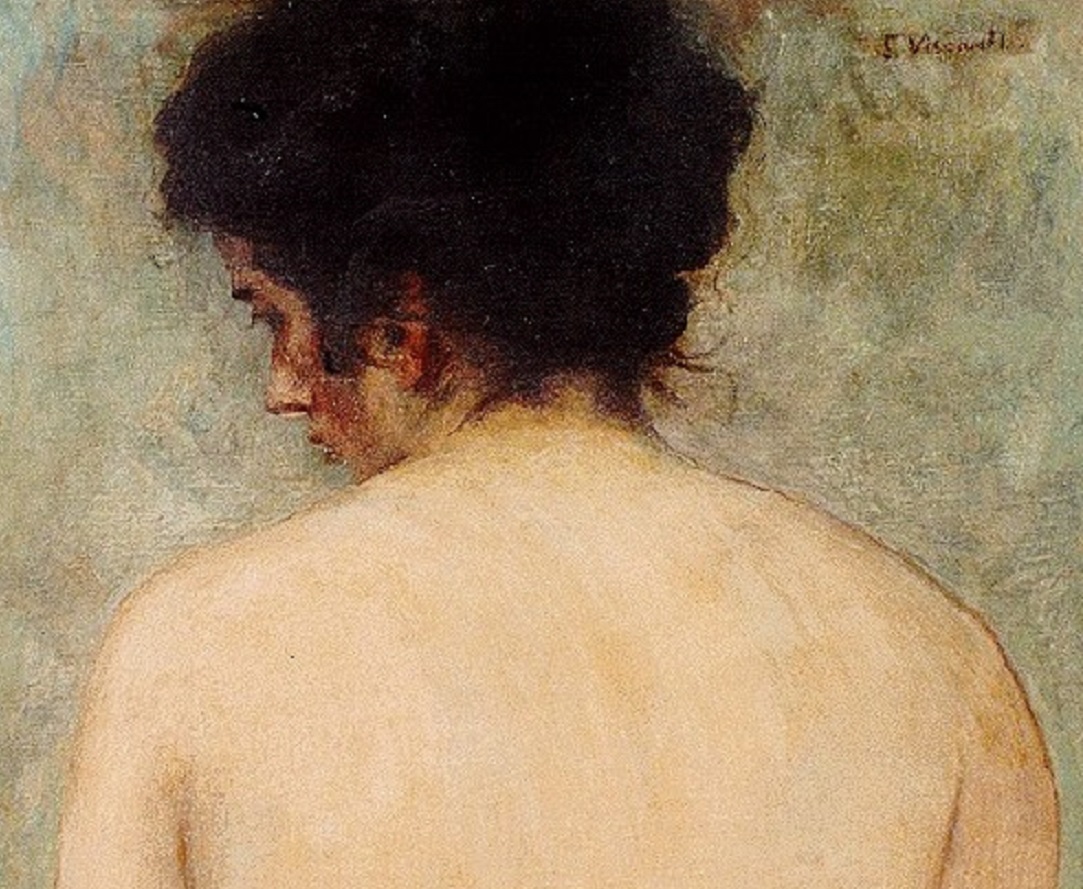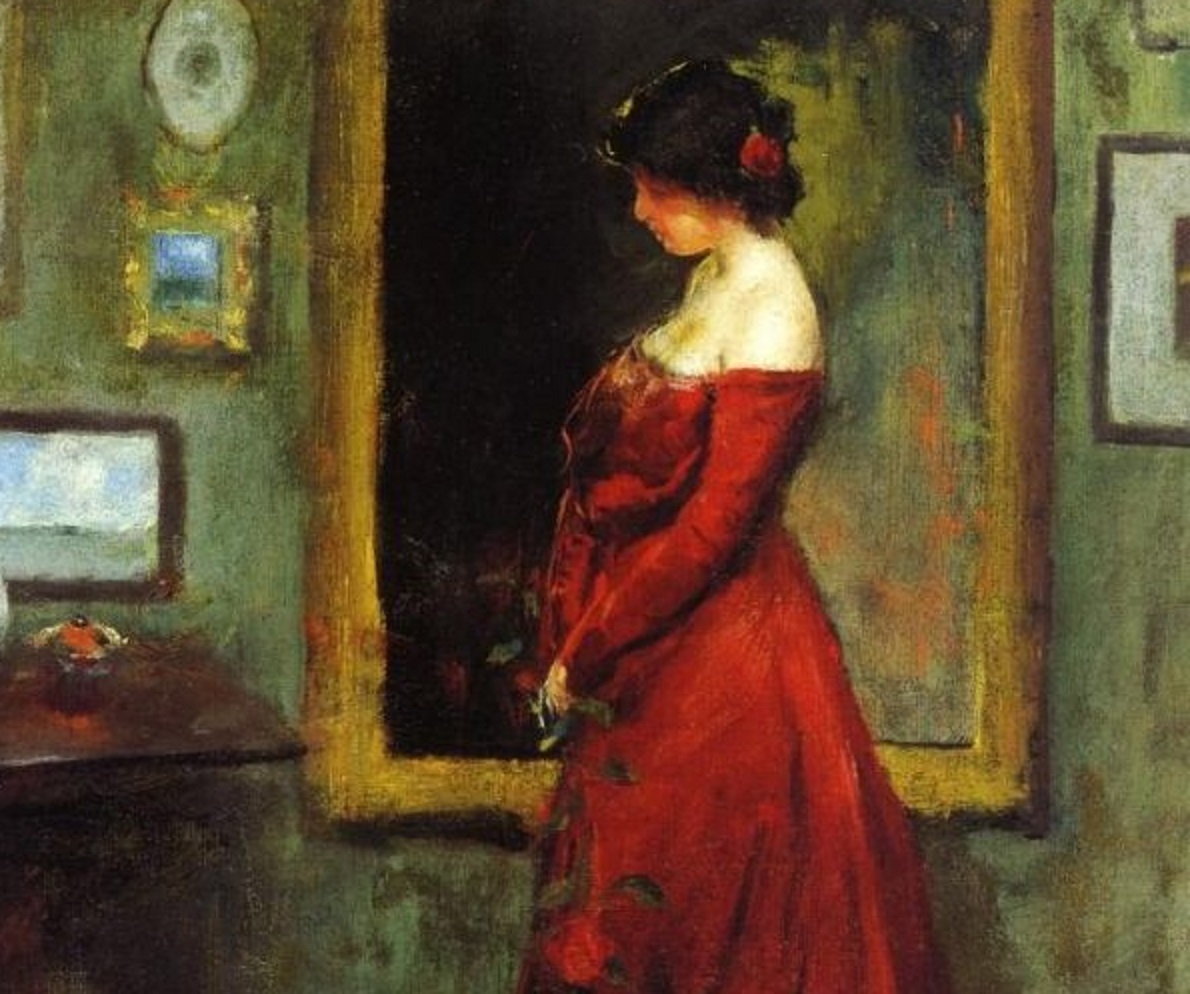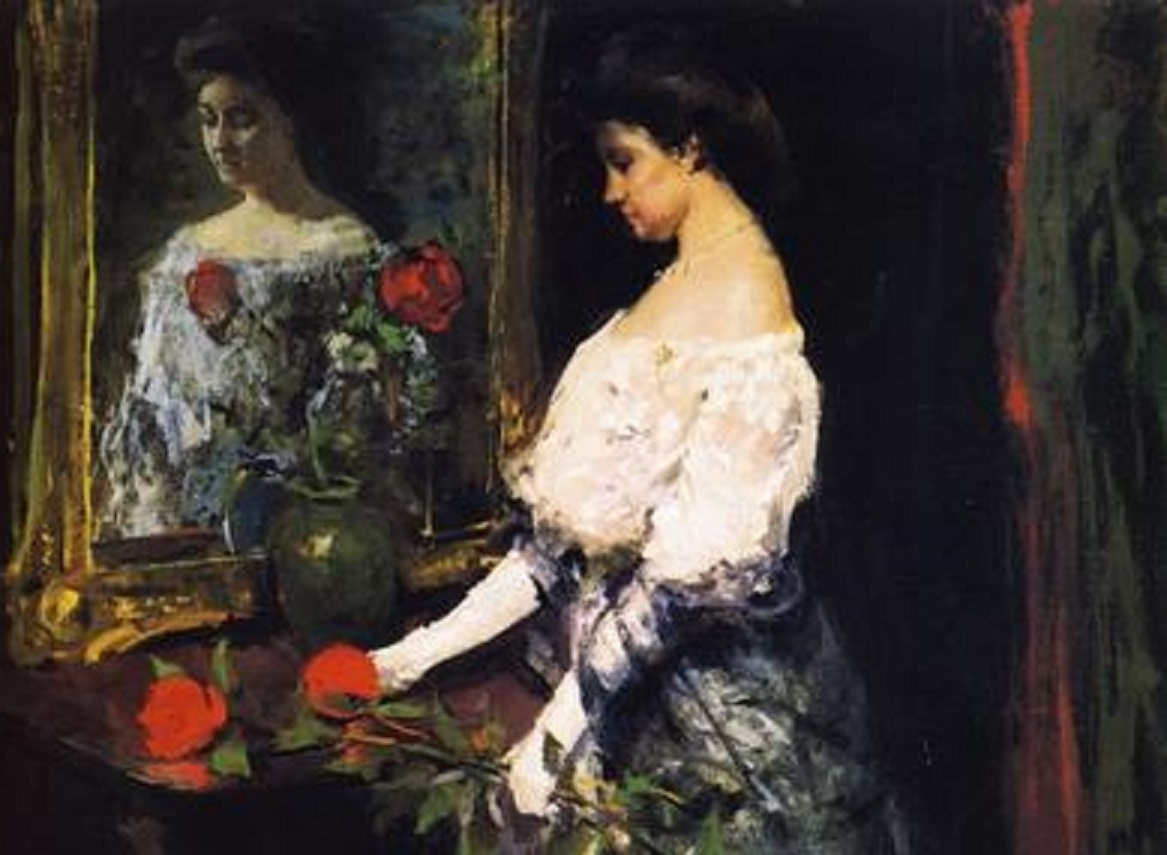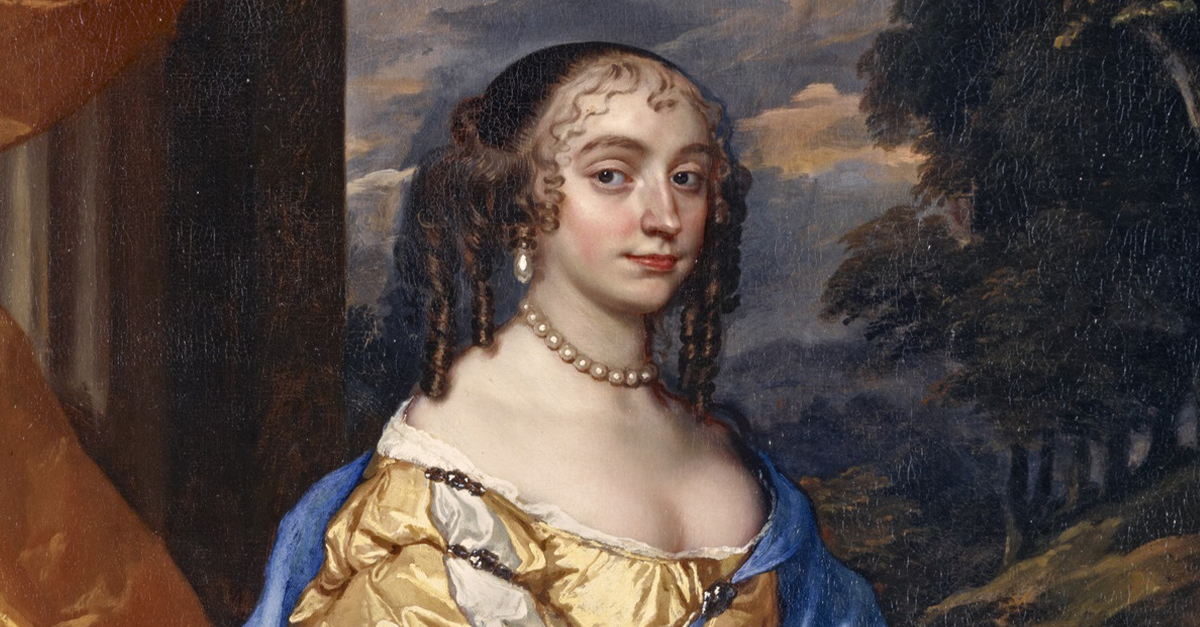1. She Was The Most Famous Courtesan In Paris
In the Second Empire of France, there was no courtesan more powerful than La Paiva. Called “The queen of kept women,” La Paiva left scores of ruined men in her wake as she moved through the streets of Paris. Yet for all her ravishing looks, those who got closest to her knew the chilling truth: She was a monster inside.
From her surprising beginning to her disgusting end, this is the story of Paris’s most infamous courtesan.
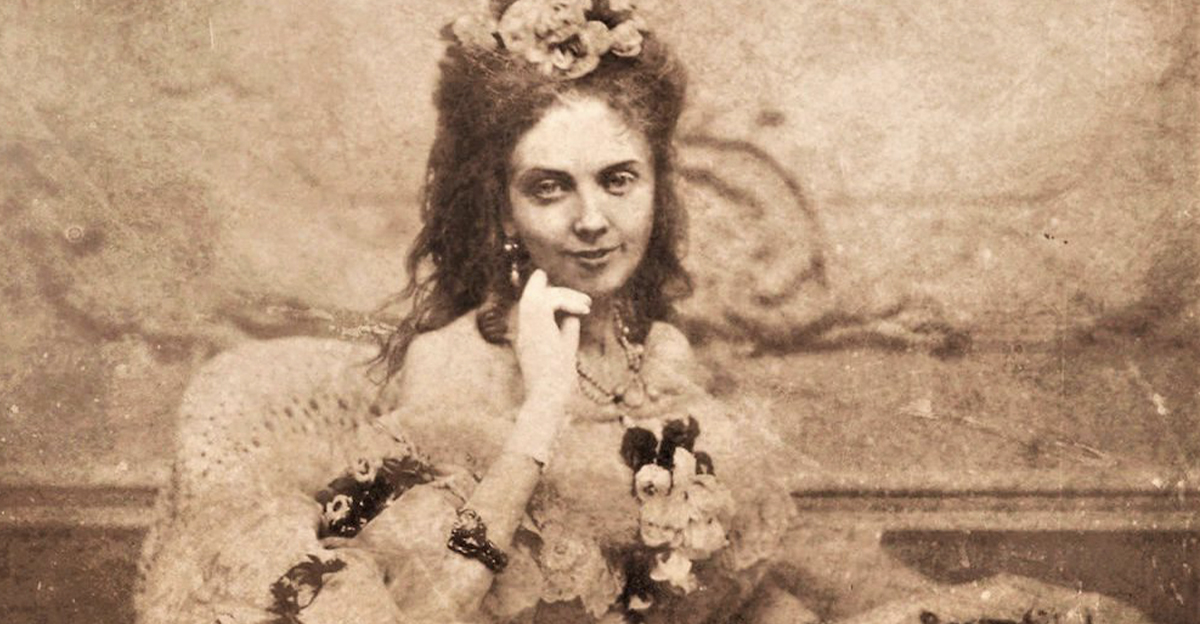
2. She Went From Rags To Riches
In many ways, La Paiva’s upbringing provided the blueprint for the courtesans that came after her—it was a dark Cinderella story. She was born in Moscow, Russia to a humble Jewish weaver and his wife, and originally went by the name Esther Lachmann. In other words, she came from nothing and rose to infamy.
Indeed, when she was just 17 years old, she made her first step into the demi-monde—just not in the usual way.
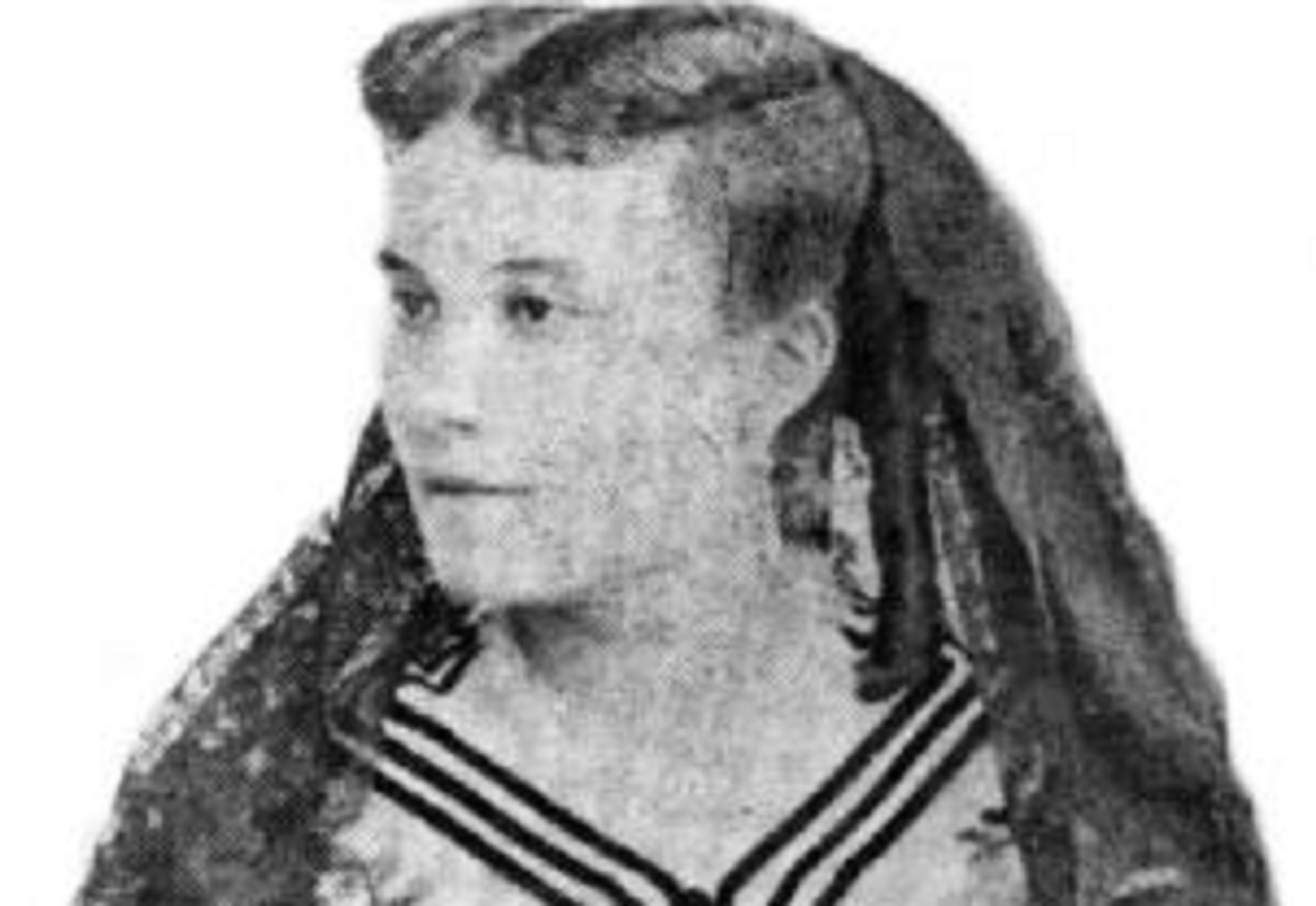 Unknown author , Wikimedia Commons
Unknown author , Wikimedia Commons
3. She Got Married Young
As a teenager, the girl who would become La Paiva tried to embark on a quiet, domestic life when she married Antoine Villoing, a local tailor. She even had one son by him, also named Antoine. But the cracks began to show immediately. Recently, she had been showing signs of restlessness, taking on French affectations and making people call her “Thérèse” or “Blanche”. Then, within a year of her son’s birth, she made a shocking decision.
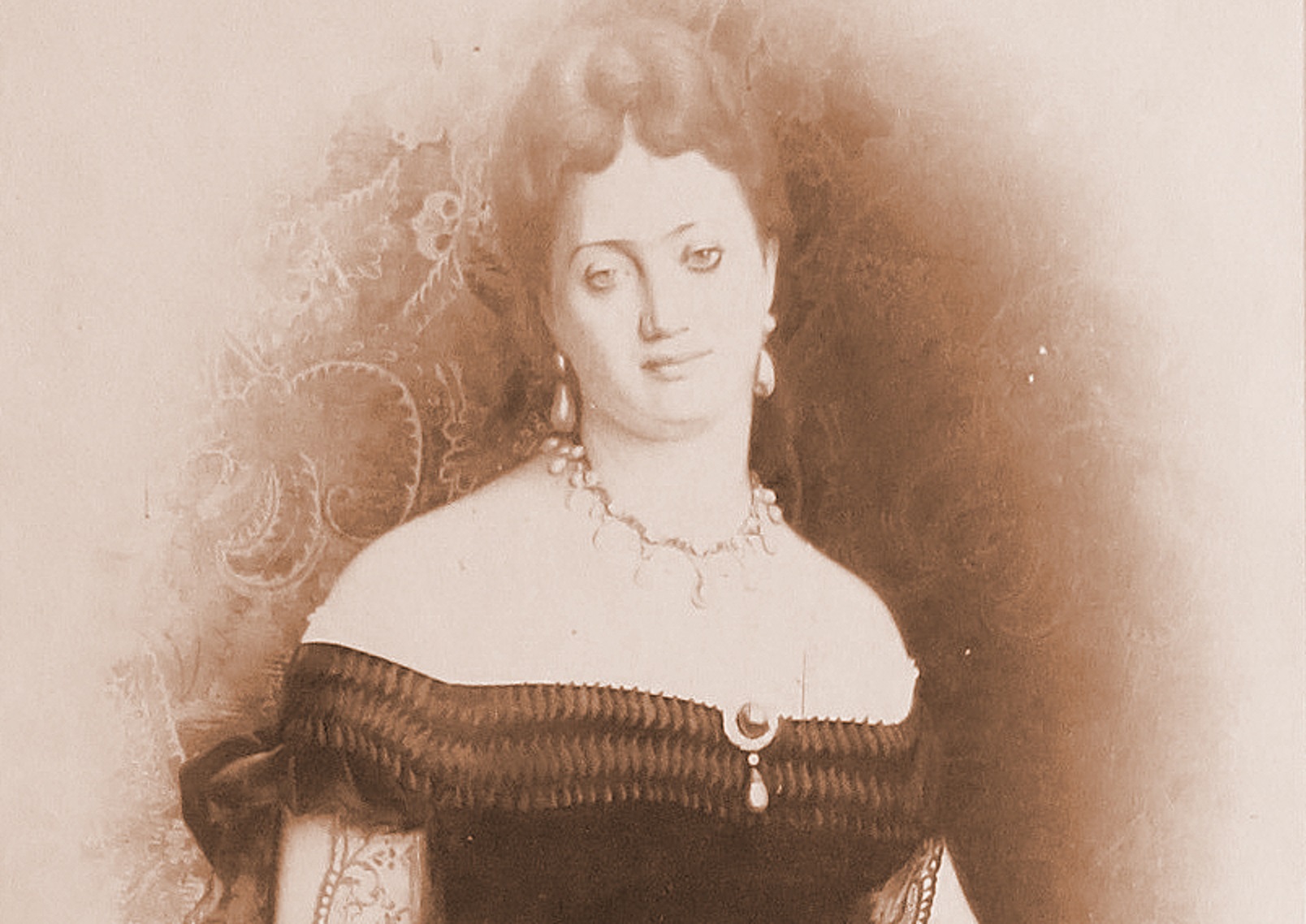 https://madparis.fr/IMG/arton5826.jpg?1444039411, CC BY-SA 4.0 , Wikimedia Commons
https://madparis.fr/IMG/arton5826.jpg?1444039411, CC BY-SA 4.0 , Wikimedia Commons
4. She Left Her Family
With her marriage still in the newlywed phase and her son still a newborn, La Paiva decided to travel through Europe and settle in Paris—without her husband or her baby. By now, she was utterly determined to achieve one goal: Become rich, no matter the cost and no matter the means. Her next act proved just how serious she was.
5. She Turned To Dark Deeds
La Paiva had a shrewd head on her shoulders, and she knew if she wanted to make it in the Paris demi-monde—which she saw as her best way to get her coins—she had to, er, practice. She quickly lodged up in a maison de passe with other ladies and entertained a revolving door of men. Yet that wasn’t all she did.
6. She Was Utterly Cunning
At this time, the budding courtesan wasn’t merely spinning her wheels, waiting for a rich man to come scoop her up. Oh, no. According to her own account, she ruthlessly honed her skills and her ambitions during this time, performing reconnaissance on the best places to be seen and the best men to be seen with. It would soon pay off tenfold.
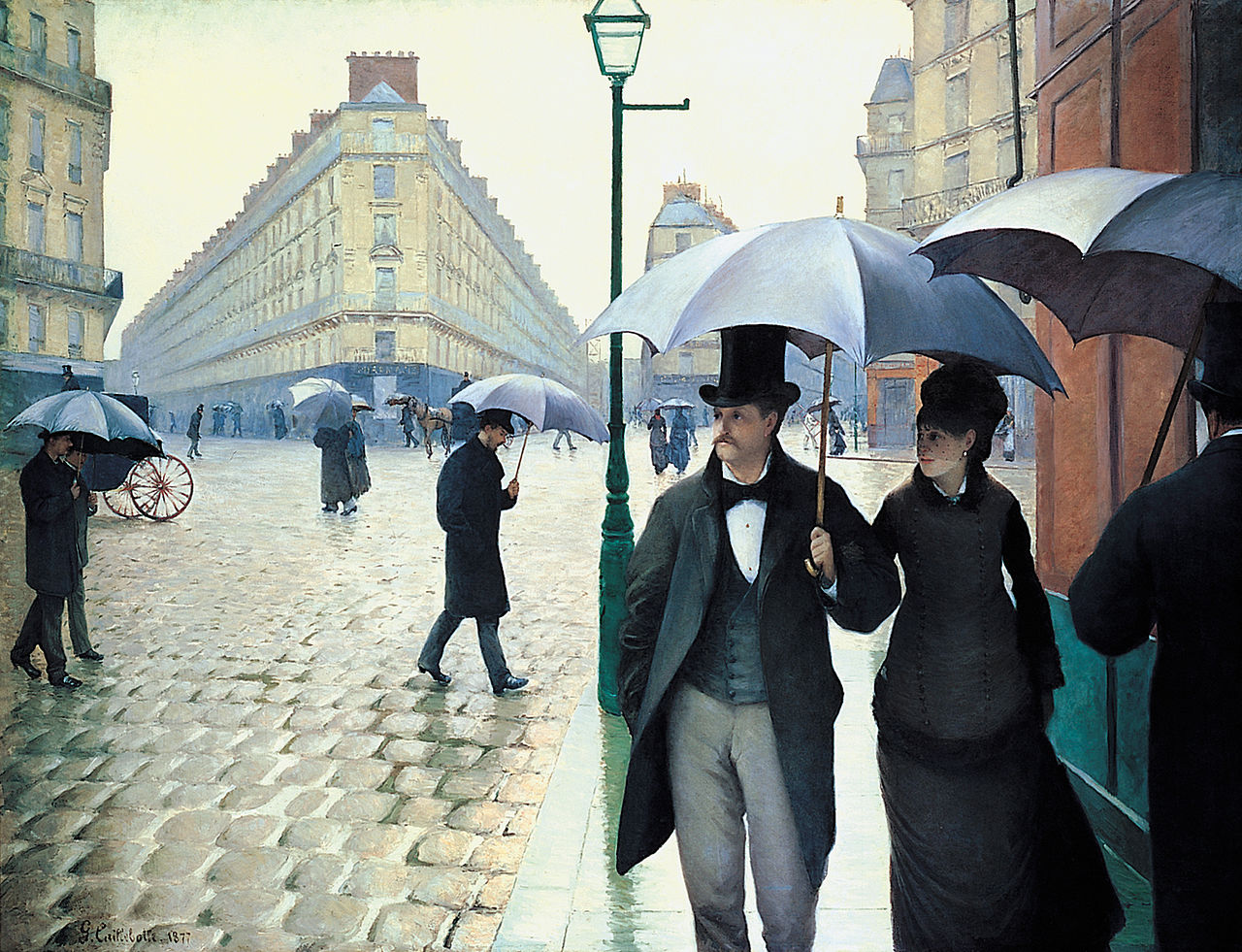 Gustave Caillebotte, Wikimedia Commons
Gustave Caillebotte, Wikimedia Commons
7. She Had A Strange Attraction
Despite her reputation as a seductress, people didn’t consider La Paiva conventionally beautiful. Her eyes were too large, and her nose—at least for the anti-Semitic sentiments of the time—was too pear-shaped. She did, however, have an ace up her sleeve. For the French, she perfectly embodied “belle-laide” or “ugly-beautiful,” and she was utterly captivating because of her unusual features.
So when she finally decided to make a move, the result was explosive.
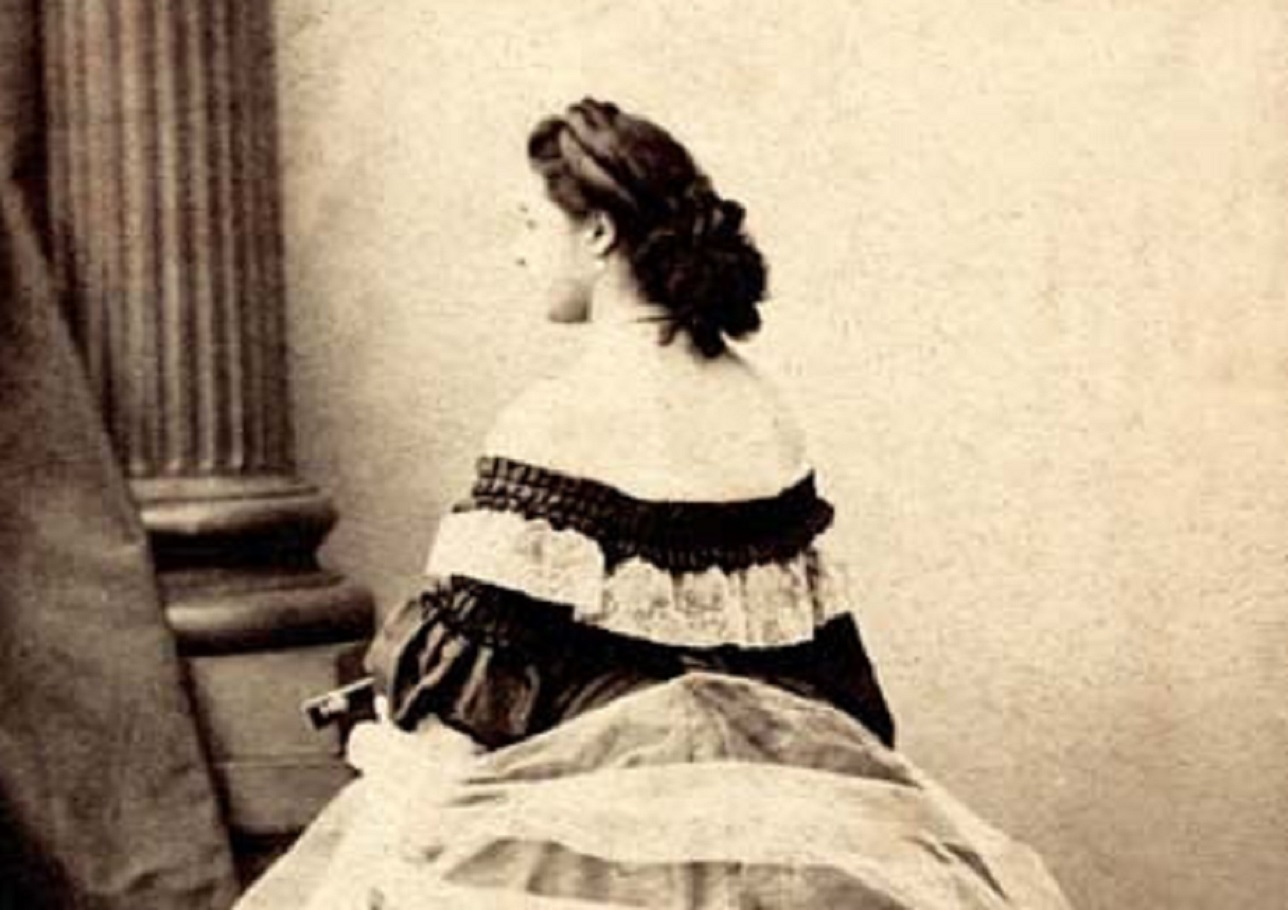 Marie-Alexandre Alophe, Wikimedia Commons
Marie-Alexandre Alophe, Wikimedia Commons
8. She Bagged An Artist
In 1841, at 22 years old, La Paiva packed up her possessions, plus some borrowed gowns and paste jewelry, and took herself down to a spa town where wealthy men liked to congregate. While there, she hit the first of many jackpots. Henri Herz, a well-off and fashionable pianist, quickly fell in love with her and brought her back to Paris as his mistress.
It wasn’t all a fairy-tale, though.
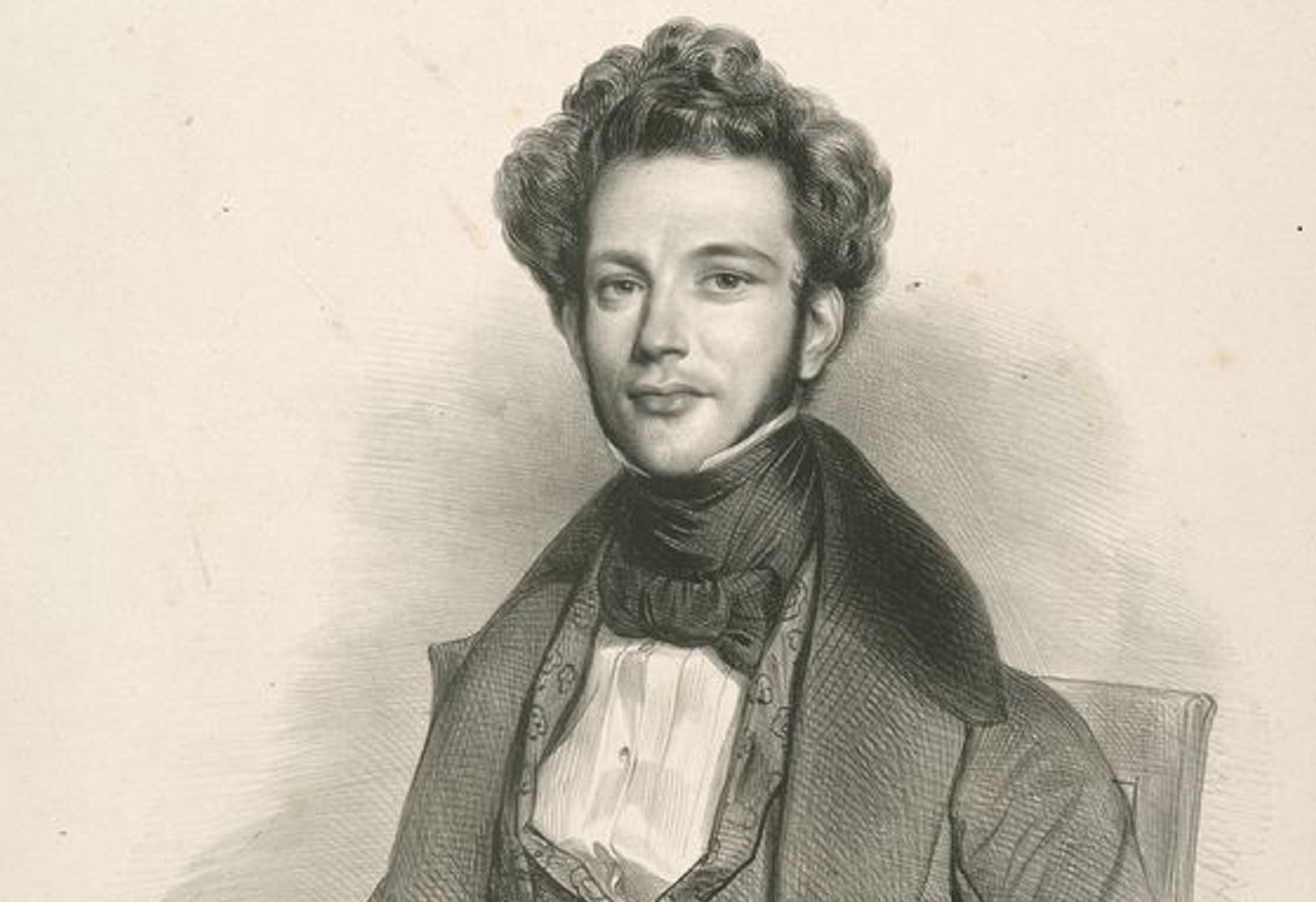 Achille Devéria, Wikimedia Commons
Achille Devéria, Wikimedia Commons
9. The Royal Family Hated Her
Through Herz, La Paiva gained entry to the Bohemian world of artists, and she was no doubt hugely charming at their loose, debauched parties. Still, this wasn’t enough. La Paiva also wanted the aristocracy to accept her—but the noble court of King Louis-Philippe of France roundly turned her away from their ranks. Then again, she was still hiding a dark secret.
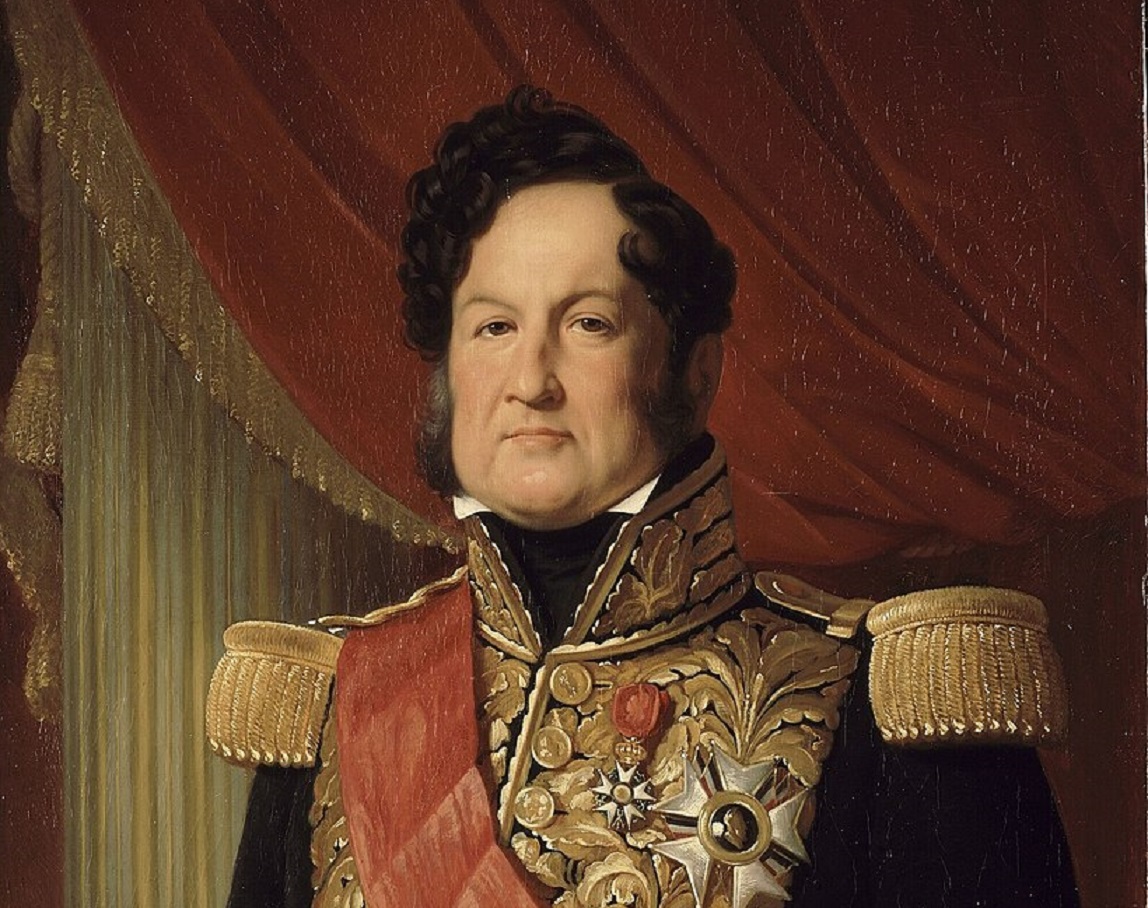 Louise Adélaïde Desnos, Wikimedia Commons
Louise Adélaïde Desnos, Wikimedia Commons

History's most fascinating stories and darkest secrets, delivered to your inbox daily.
10. She Lived A Lie
While in Paris with Herz, she began going by the name “Madame Herz,” and he would often introduce her to society as his wife. The only problem? She was still married to her first husband, the tailor back in Moscow. So instead of a marriage certificate, she accepted an apartment and jewels from Herz. Yet as always, she wanted more.
She was about to bite off more than she could chew.
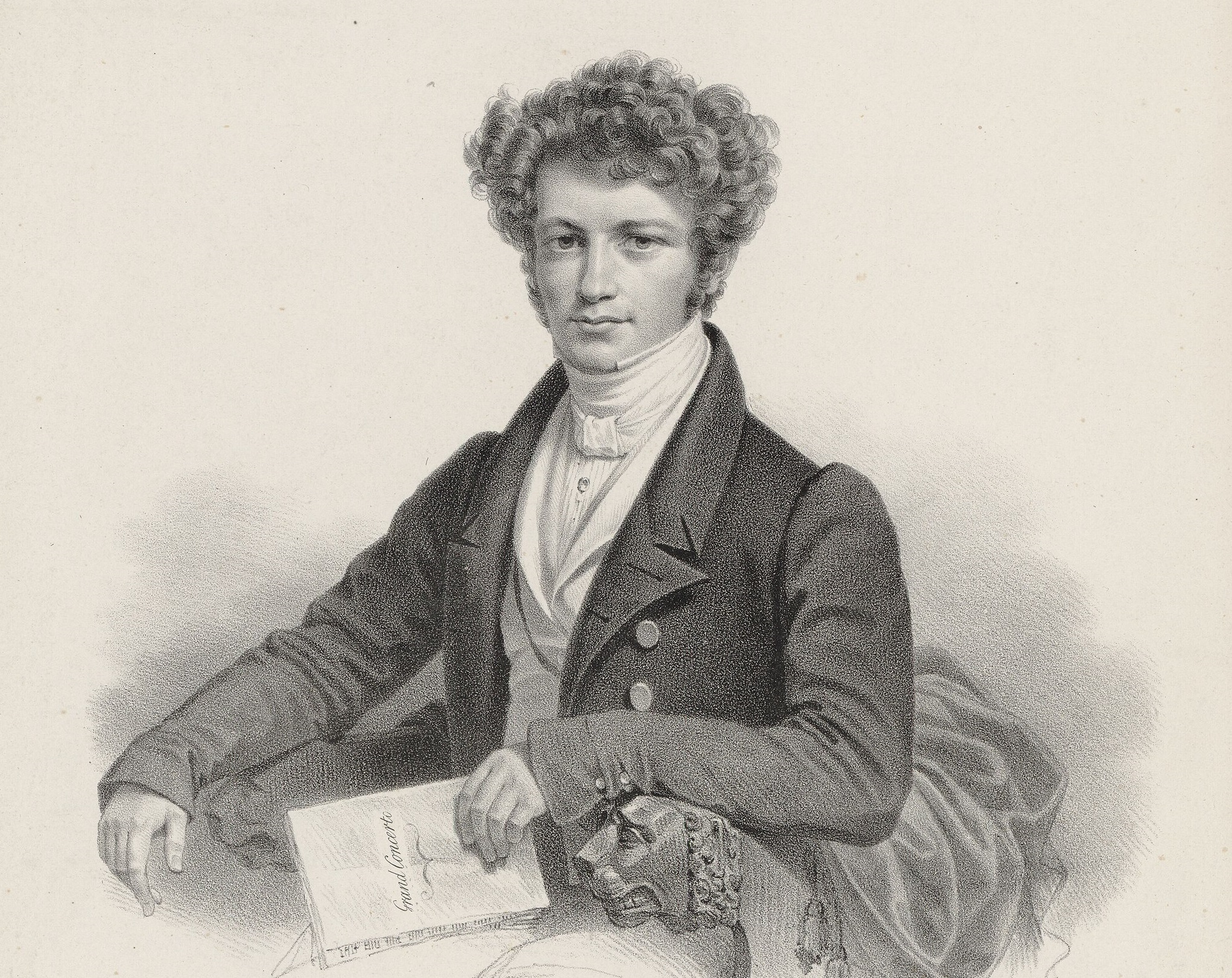 Pierre-Roch Vigneron, Wikimedia Commons
Pierre-Roch Vigneron, Wikimedia Commons
11. She Was A Bad Mother
Around 1847, years into her relationship with Herz, La Paiva got likely unwelcome news. She was pregnant again, and gave birth to a baby girl named Henriette. But, just as with her first child, La Paiva wanted little to do with her daughter, and the girl’s paternal grandparents raised her instead.
No, this wasn’t the kind of “more” La Paiva was looking for. She wanted more money, more acceptance into aristocratic society, more for her. Herz tried to oblige—and this is where it all went sideways.
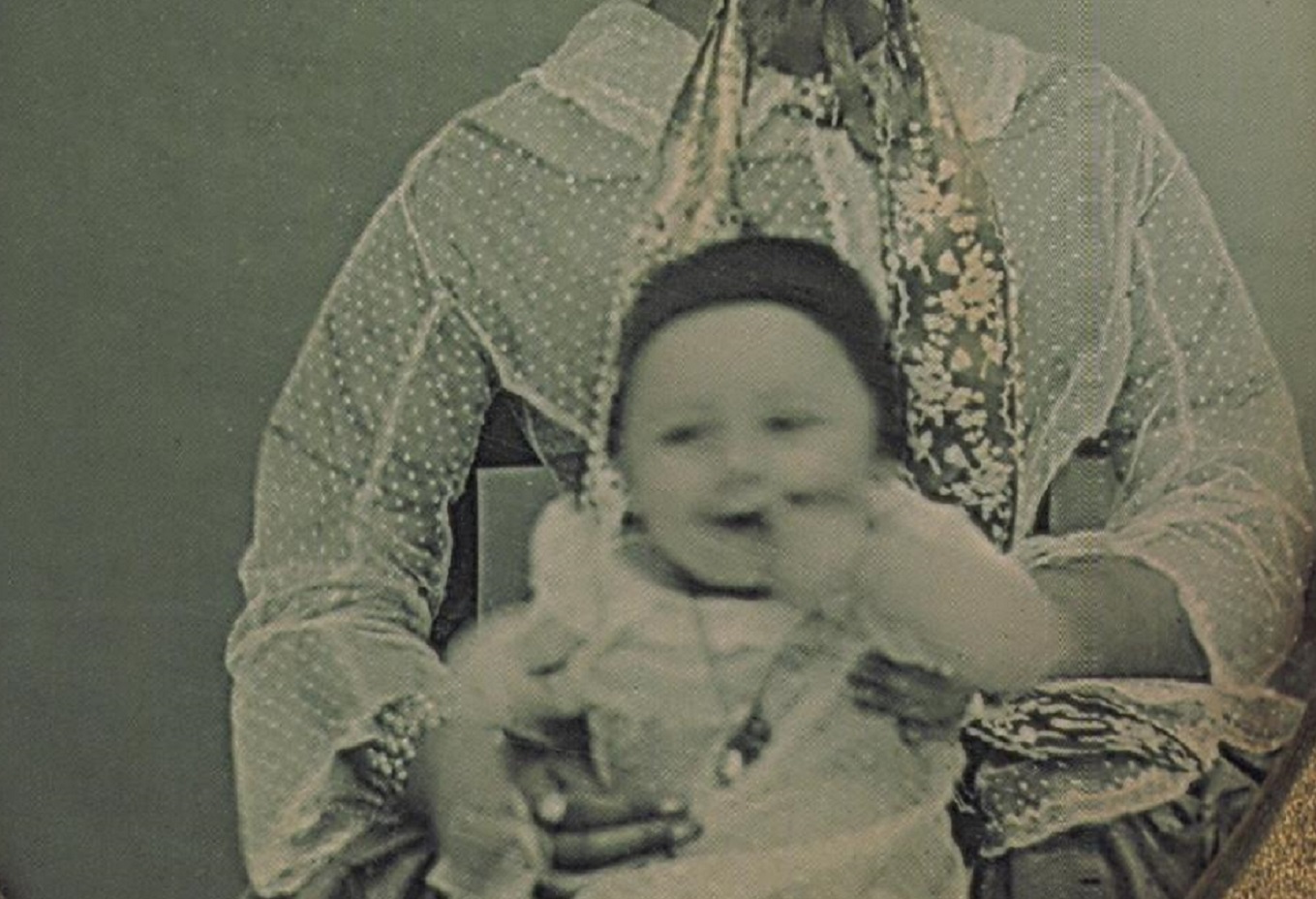 Insley Pacheco, Wikimedia Commons
Insley Pacheco, Wikimedia Commons
12. She Made Extreme Demands
La Paiva was never shy about saying what drove her: money, money, money. Even so, her completely unfettered spending stunned Herz and drained his coffers down to almost nothing. In an attempt to keep the cash flow going, soon after their daughter was born he went to America to look at business opportunities and play some concerts.
When he did, everyone realized something was terribly, terribly wrong.
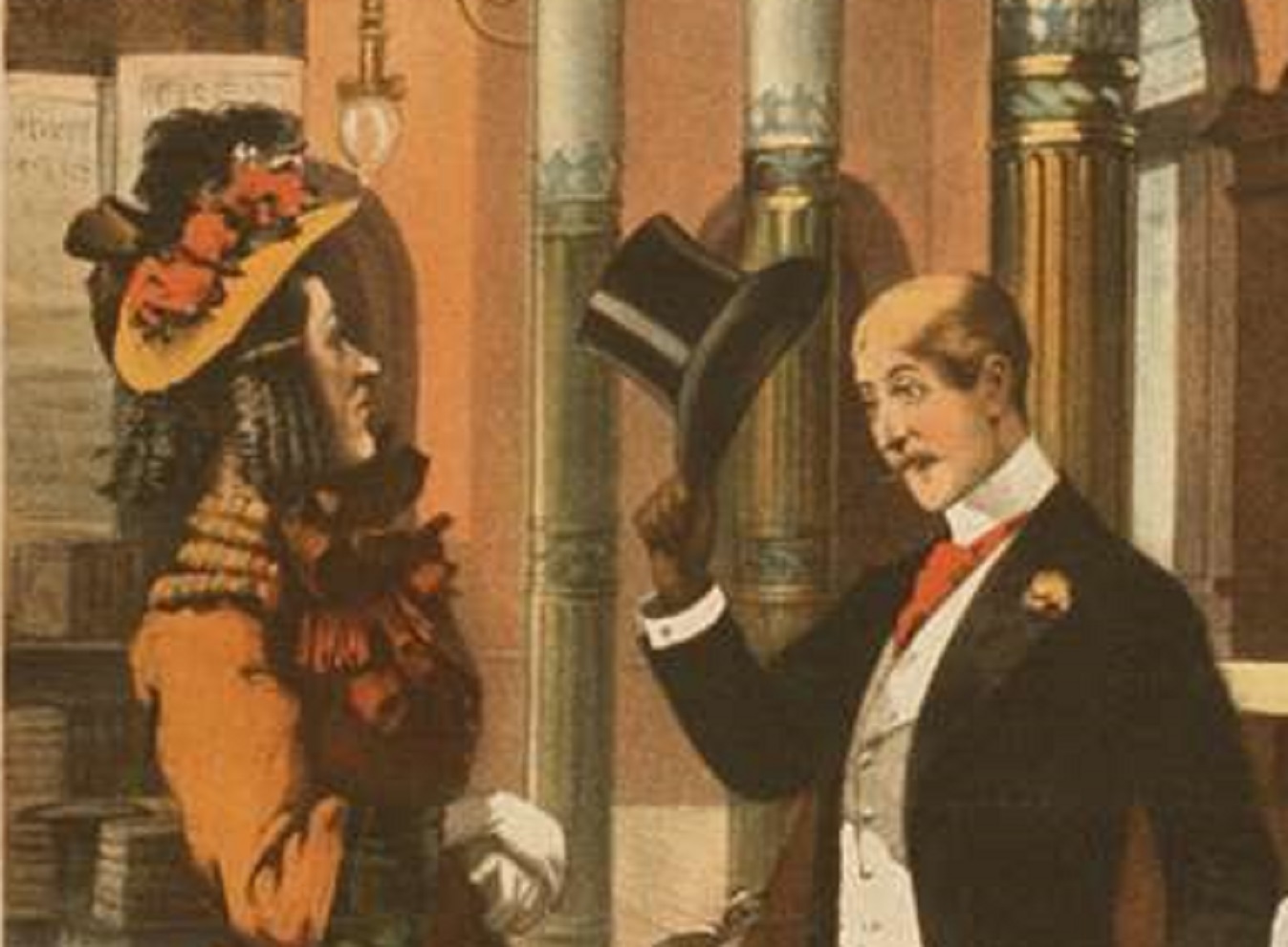 Strobridge & Co. Lith. D.W. Truss & Co. , Picryl
Strobridge & Co. Lith. D.W. Truss & Co. , Picryl
13. She Drained Her Lover Dry
It’s silly and insidious to characterize all courtesans as blood-sucking vampires…but when it comes to La Paiva, the shoe fits. When Herz played those “please give me money” concerts, his desperation showed. People said the shows were full of “tameness and torpidity,” and it was clear he was exhausted from his years trying to provide for his demanding mistress.
Back in Europe, though, La Paiva was putting on her own show.
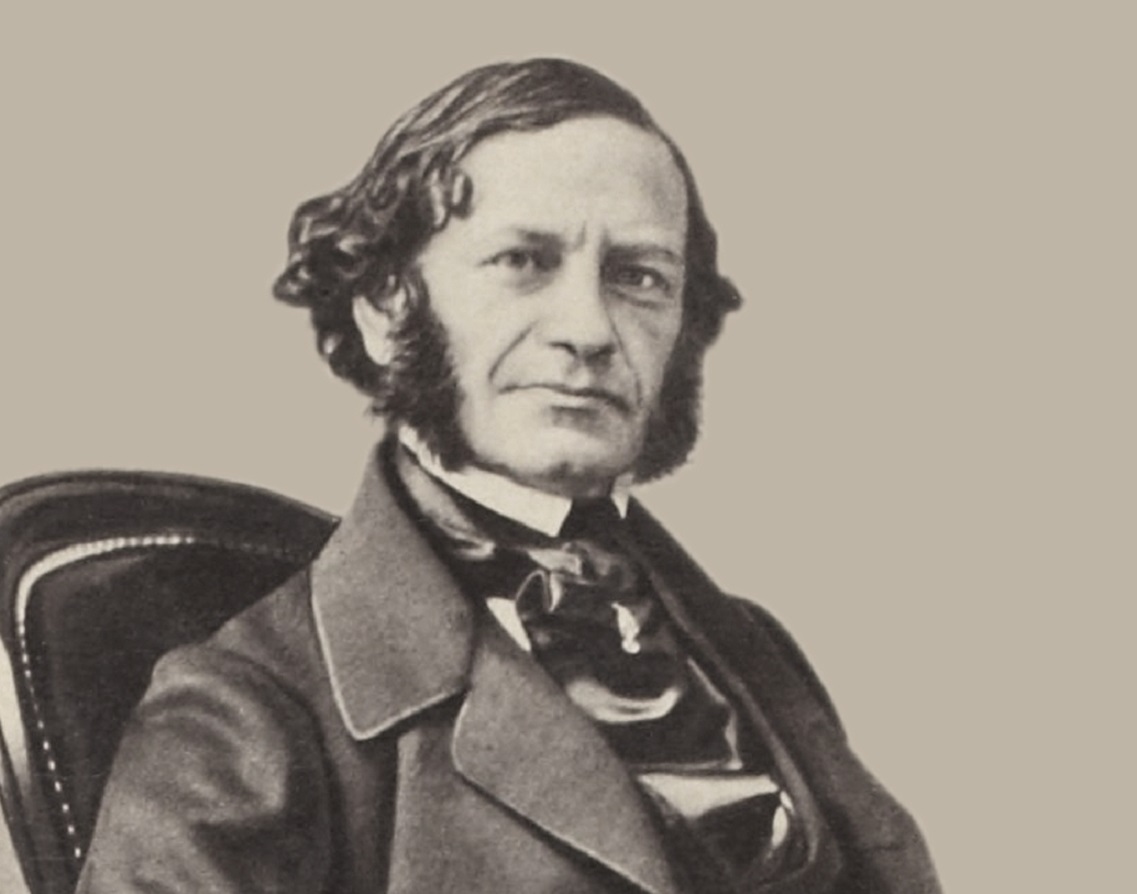 Pierson & Mayer. Upload, stitch and restoration by Jebulon, Wikimedia Commons
Pierson & Mayer. Upload, stitch and restoration by Jebulon, Wikimedia Commons
14. She Made A Fatal Error
The courtesan no doubt knew of her partner’s financial woes, but she nonetheless treated his absence like an opportunity for an unchaperoned shopping spree. This time, though, it had grave consequences. His family, who had clearly never been fans, turned her out of the house, refused her any further financial aid, and all but ended their relationship.
Suddenly, La Paiva had nowhere to go…until a friend made a scandalous suggestion.
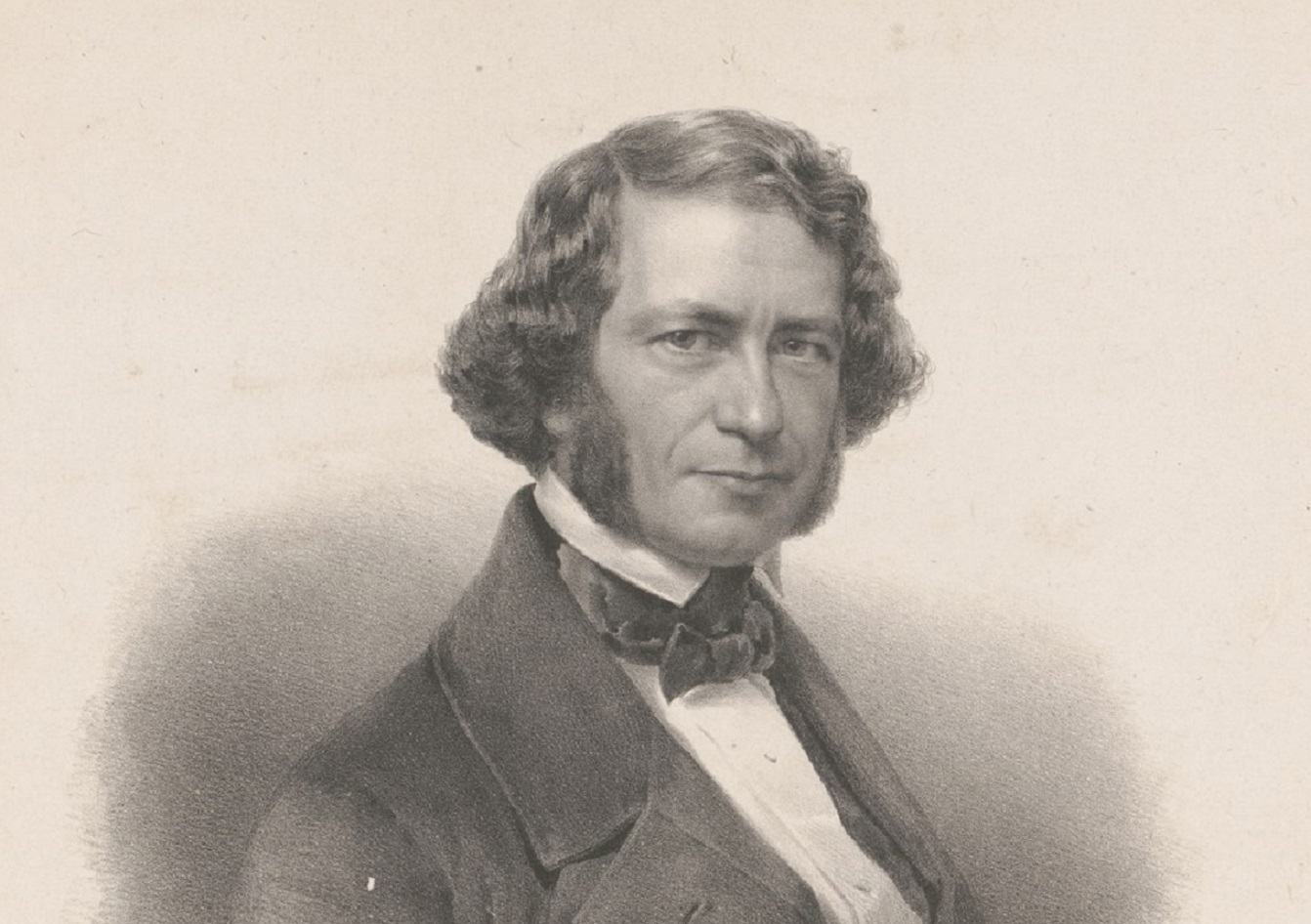 Popular Graphic Arts, Wikimedia Commons
Popular Graphic Arts, Wikimedia Commons
15. She Got A New Target
One day, an acquaintance saw La Paiva’s desperation without Herz and told her she should stop trying to chase all these French men, and instead go to England to seek her fortune. As the woman put it, London was a "fairy-land in which noble strangers present beautiful women with £40,000 or £50,000 a year in pin-money”.
La Paiva hopped on practically the next ship over, dressed in gowns she had borrowed from others, and went right to Covent Garden. At this point, her true infamy began.
16. Her Little Black Book Grew
To say La Paiva was a hit with the London men would be a grave understatement; she was a total sensation. Her first conquest was Lord Edward Stanley, and her dalliance with him quickly opened up the bedroom doors of other rich men like the Duke of Guiche and the fabulously wealthy banker Adolphe Gaiffe.
La Paiva had finally made it in the demi-monde…but her antics from this time are downright chilling.
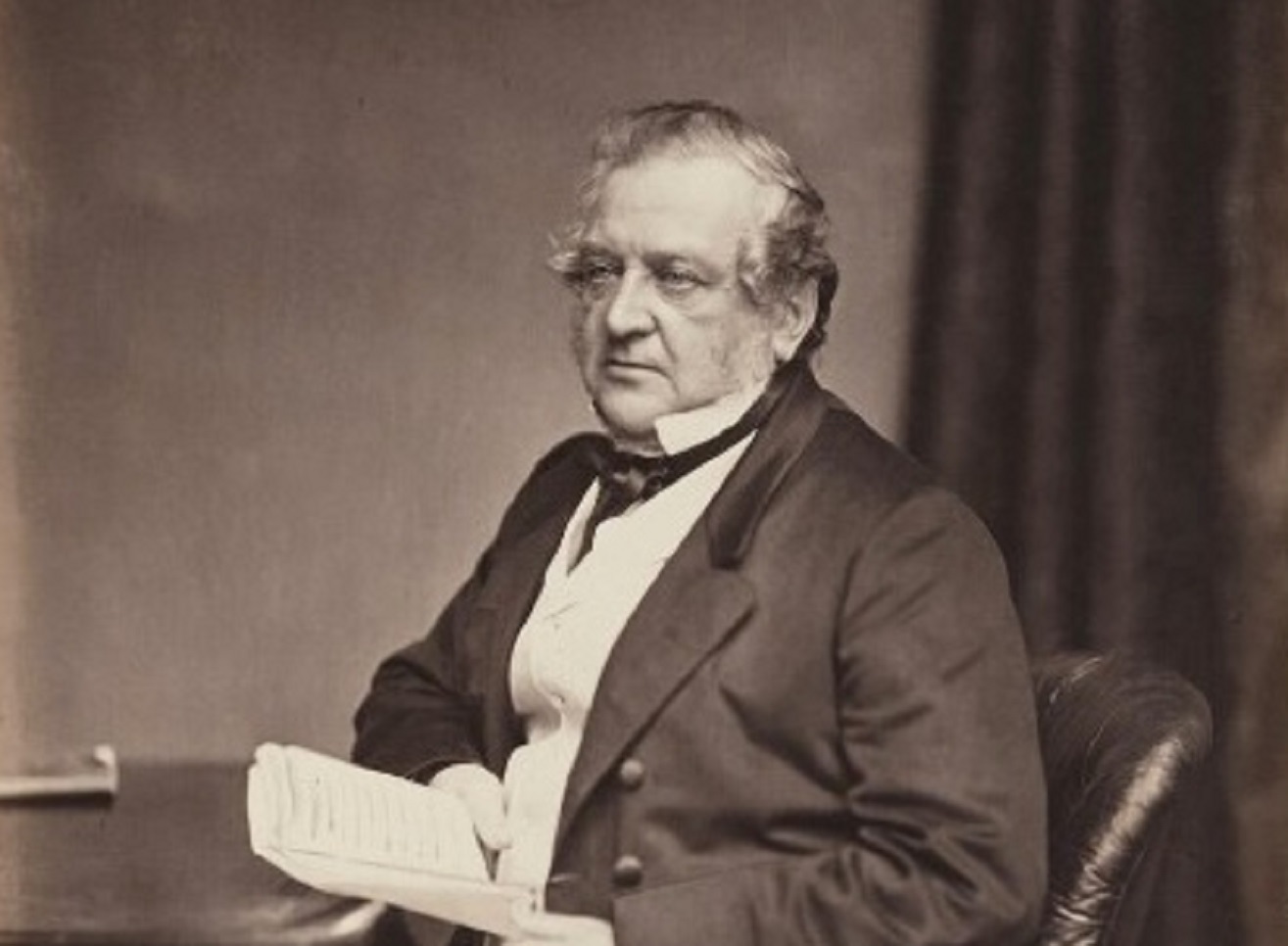 William Walker, Wikimedia Commons
William Walker, Wikimedia Commons
17. She Had Expensive Bedroom Tastes
La Paiva already had a reputation for being cold and calculating, and her bedroom habits were notorious. She had a commanding swagger to her seduction, once demanding of her banker Adolphe Gaiffe that if he wanted to have her, he had to take out 20 1000-franc banknotes and burn them, one by one, over the course of their 30 minutes in bed together. Then came the real twist.
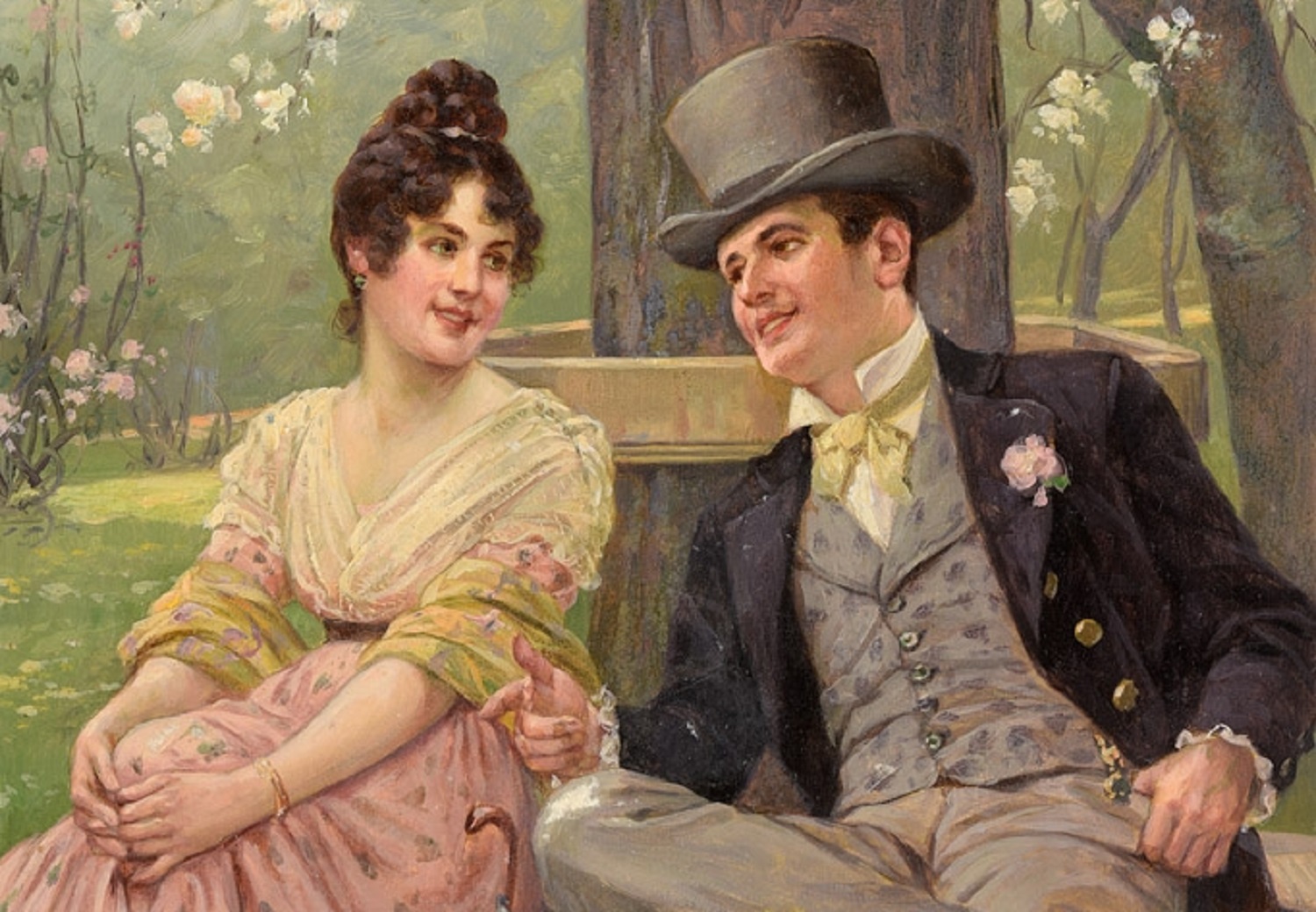 Düsseldorfer Auktionshaus , Picryl
Düsseldorfer Auktionshaus , Picryl
18. Her Lover Cheated Her
La Paiva was sharp, but Gaiffe was no naïve spring chicken either. After reportedly betting his buddies that he could get the famous courtesan in bed without paying, he secured counterfeit bills for this request. Even so, Gaiffe was apparently still so appalled at the idea, he couldn’t even burn the fake money—so an unknowing La Paiva took over for him.
Not that this would have bothered La Paiva much even if she had known. Her eyes were now on a much bigger prize.
 Cyrus Cuneo, Wikimedia Commons
Cyrus Cuneo, Wikimedia Commons
19. She Found Her New Mark
After these game-changing months in London, scores of men in both the underworld and the aristocracy knew she was the courtesan to bed, and La Paiva took her show on the road. Once again favoring spa towns to set up her honey traps, she was in Baden when she met Albino Francisco de Araujo de Paiva, the scion to an enormous fortune. But there was a sticking point.
 Kurgeschichte Bad Lausick , Picryl
Kurgeschichte Bad Lausick , Picryl
20. Her Lover Was A Fake
People often called Albino a Marquis or a Viscount—but the truth was much more scandalous. Whether La Paiva knew it or not, he was in fact merely a commoner whose merchant father built up the family wealth brick by brick. Still, his money was good enough for our girl. They soon struck up a relationship—and La Paiva got a stroke of luck.
21. She Got A Lasting Nickname
In 1849, soon after La Paiva met her latest man, her tailor husband finally passed, leaving her as a free agent at long last. Learning her lesson from Henri Herz, she wasted little time making it official with Albino de Paiva, marrying him in 1851. It was, indeed, de Paiva who gave the courtesan her lasting nickname of “La Paiva”. As it turned out, that was about all he’d give her.
22. She Wrote A Jaw-Dropping Letter
The very day after her wedding, the brand-new Madame de Paiva gave her husband a letter. Its contents were truly disturbing. In it, La Paiva ended their relationship on no uncertain terms, saying, "You have obtained the object of your desire and have succeeded in making me your wife. I, on the other hand, have acquired your name, and we can cry quits”.
It was coldness of the ninth degree, and it worked.
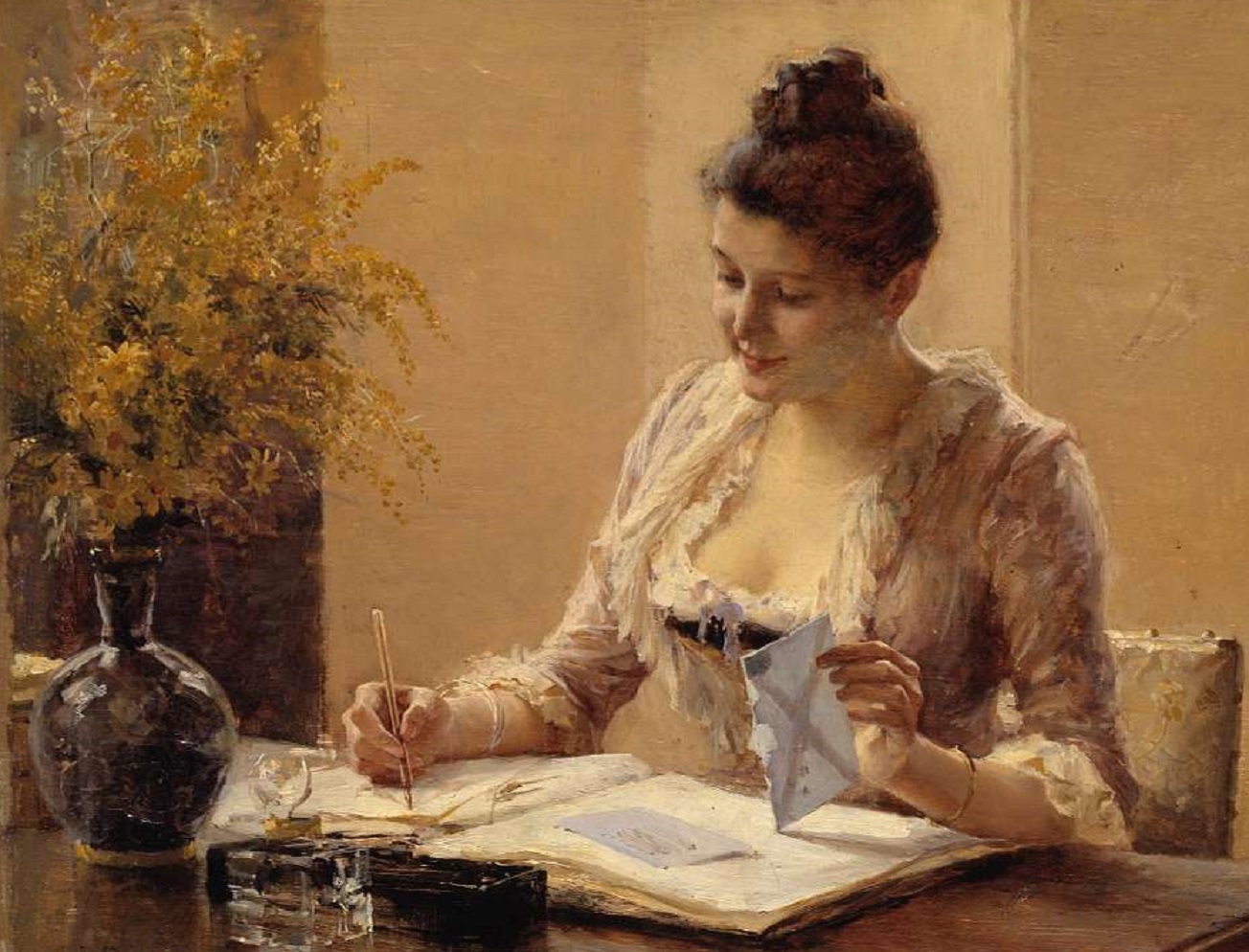 Nationalmuseum Stockholm , Picryl
Nationalmuseum Stockholm , Picryl
23. She Banished Her Husband
The pair had been together for years at this point, but that made no difference to La Paiva’s cold heart. Even more surprisingly, whether out of shock or outrage, Albino did exactly as his wife asked. He quickly headed back to his native Portugal with his tail between his legs, licking his wounds all the way. Only, he had to endure one more indignity.
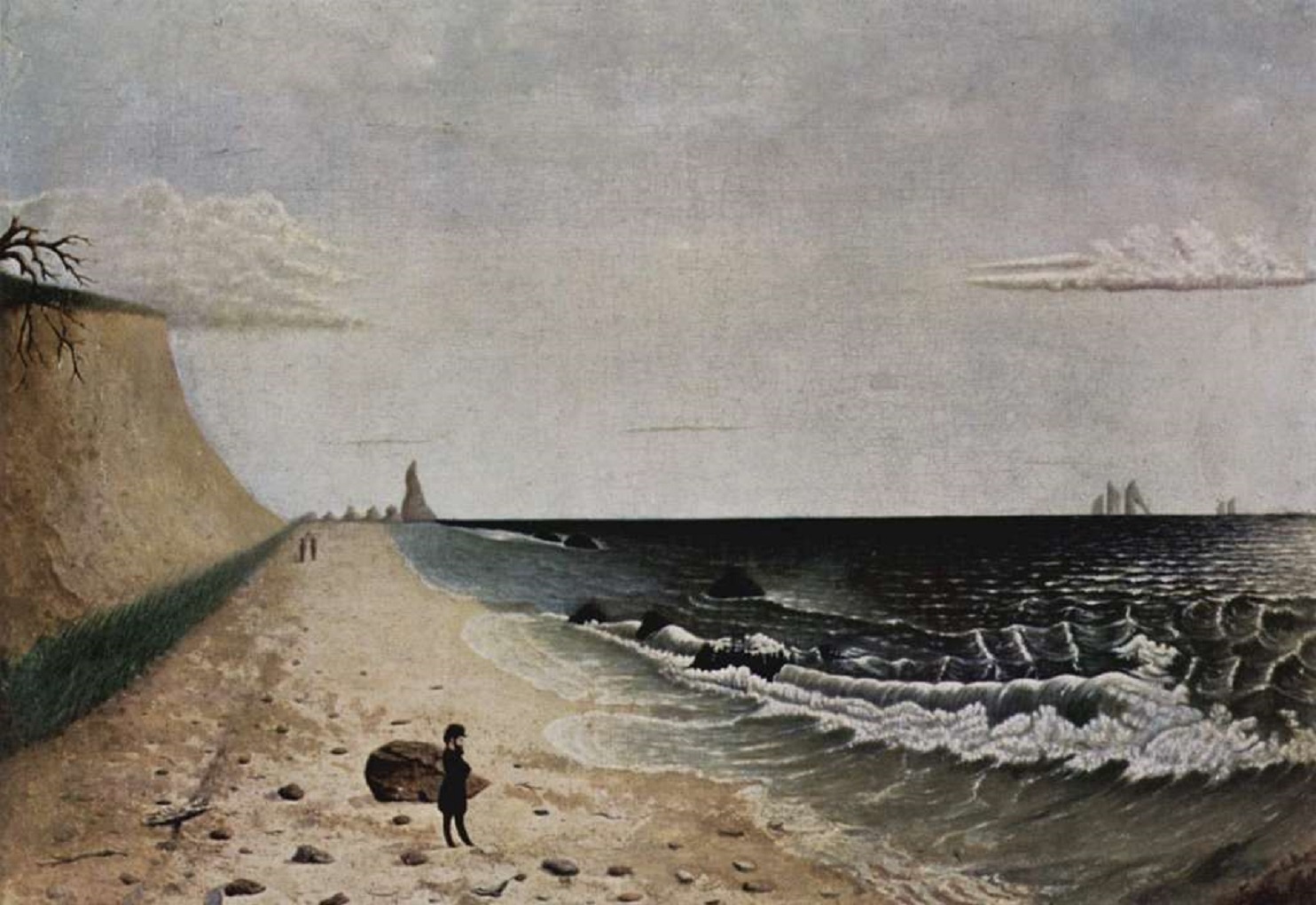 Museum of Fine Arts Boston , Picryl
Museum of Fine Arts Boston , Picryl
24. She Got One Last Insult In
La Paiva knew exactly what she was doing when she split from her husband. See, she wasn’t entitled to just his name; their marriage contract also stated that she was entitled to tens of thousands of pounds in Albino’s securities, plus all the furnishings of their house. With no other recourse, the humiliated husband forked everything over.
La Paiva always came out on top in a breakup. She was about to rise even higher.
 Metropolitan Museum of Art, Wikimedia Commons
Metropolitan Museum of Art, Wikimedia Commons
25. She Became The Toast Of Paris
With her second marriage under her belt, La Paiva began searching around for her next victim—uh, I mean man. The thing is, it was easy. Paris was now in the throes of the Second Empire, and tastes had shifted to include famous courtesans like La Paiva at the chicest parties. It was exactly where she had always wanted to be.
At one such party, La Paiva zeroed in on the industrialist Count Guido Henckel von Donnersmarck. Her pursuit was nothing short of genius.
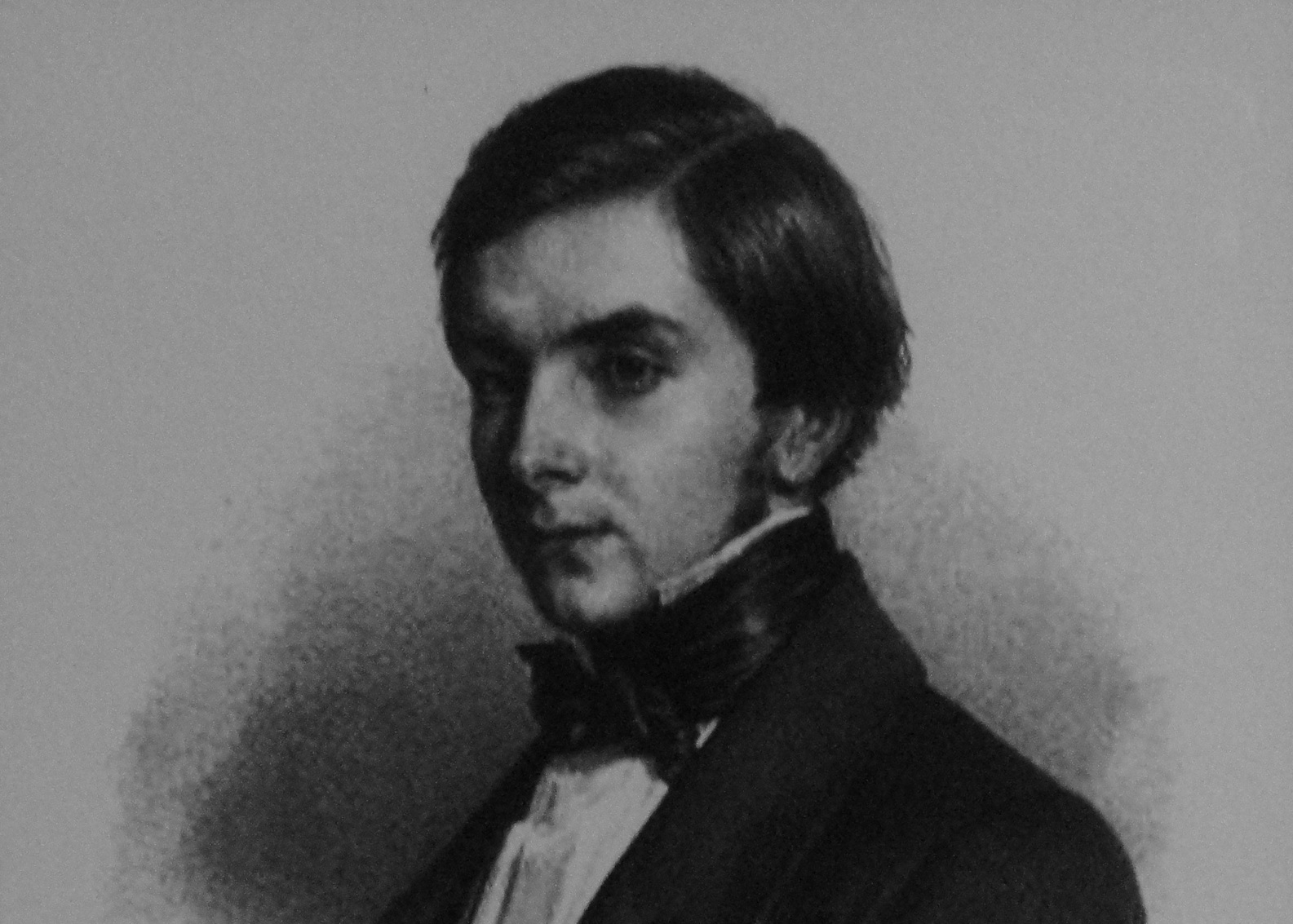 Hôtel La Païva, Wikimedia Commons
Hôtel La Païva, Wikimedia Commons
26. She Played A Cruel Game
While Donnersmarck was a ruddy-cheeked 22-year-old, La Paiva was well into her 30s now, with a lifetime of tradecraft behind her. Accordingly, she played him like a fiddle. Although she followed him across Europe, always happening to be at the same events, she pretended each time like she wasn’t really into him and it was all happenstance they kept seeing each other.
Warning: Do not try negging at home. But for La Paiva, it worked a charm.
27. She Met Her Match
In truth, La Paiva couldn’t have picked a more perfect mark for her sugar daddy. A powerful-looking specimen, Donnersmarck loved to throw his money around lavishly, and made his mark on the world by speculating wildly and building up a stable of shady contacts. In other words, game recognized game. Soon, Donnersmarck had his own plan for La Paiva.
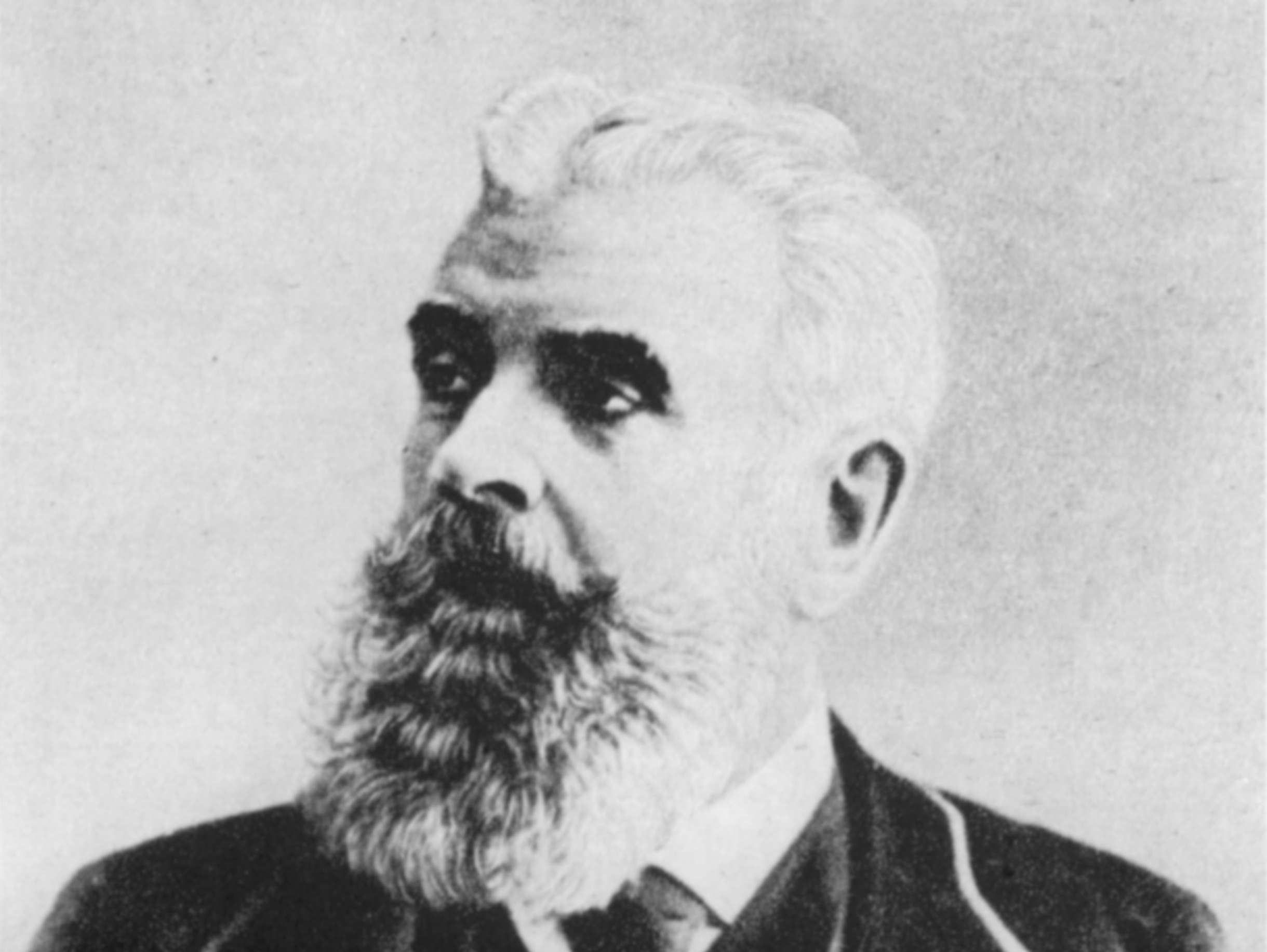 Unknown author, Wikimedia Commons
Unknown author, Wikimedia Commons
28. She Won Her Prize
By the time they met again in Berlin, Donnersmarck only wanted La Paiva. He then made her an offer she couldn’t refuse—or at least, would never refuse. He said that if she became his mistress, he would share his immense wealth with her. The jewel-happy courtesan agreed, reportedly saying, “All my wishes have come to heel, like tame dogs!”
After this, her lifestyle got a serious and gaudy upgrade.
29. She Lived In Luxury
Donnersmarck’s love language was obviously gift giving, and that suited La Paiva down to a tee. In 1866, he presented her with Hotel de la Paiva, a massive, gaudy, custom-built mansion. Its details were jaw-dropping. It had a yellow onyx staircase and a matching bathtub for the Madame—and the tales of her excess in this house are the stuff of legend.
30. She Bathed In Strange Substances
In La Paiva’s yellow onyx bathtub had three jewel-encrusted taps, but only one of them was for water. In the others, the kept woman liked to keep milk and champagne, both of which she often bathed in. Indeed, she liked rose champagne so much, she often insisted that any guests to her spacious abode bring her a magnum of it as a gift.
At long last, the girl from the Moscow ghetto had finally arrived. She made sure everyone knew it.
31. She Loved Putting On A Show
With a house like that, it’s no wonder that La Paiva became one of the most celebrated hostesses of her day, and frequently held parties for luminaries like the French writers Gustave Flaubert and Emile Zola. While performing these duties, La Paiva relished wowing her guests with her expensive spreads, often having out-of-season fruits even for January parties.
This very extravagance led to one famous moment.
32. She Knew Her Worth, Literally
La Paiva was never shy about admitting how much she loved money, and one day she really let it all hang out. At one of incredible her gala evenings, she overheard two guests discussing how much she was worth, with one suggesting 10 million francs a year. Her response was legendary. The hostess butted in to say, "You must be mad. Ten millions?...Why my table alone costs me more than that”.
This brutal honesty about her avarice reared its head in other ways, too.
 Adolphe Joseph Thomas Monticelli, Wikimedia Commons
Adolphe Joseph Thomas Monticelli, Wikimedia Commons
33. She Loved Her Jewels More Than Her Own Children
As La Paiva got richer and richer the longer she was Donnersmarck’s mistress, her jewelry collection—once consisting of fakes—grew to immense proportions. According to one commenter, she often wore two million francs’ worth of gems on her person. Even better, the courtesan liked to call her jewels “my children,” all while having abandoned her actual children long ago.
It was a very good life, and La Paiva was surely one of the most successful courtesans in history at this point. But then her old habits popped up…
34. She Wanted To Make It Official
As the 1870s and middle age approached, La Paiva grew tired of merely being Donnersmarck’s mistress, and pushed to become his wife. As always with her, there was a little problem. She was still married to Albino de Paiva. Still, for a woman of her means and ambitions, this was nothing. In the summer of 1871, La Paiva finally got what she wanted out of her ex-husband Albino: An annulment. And then her dreams came true.
35. She Got An Empress’s Bounty
La Paiva quickly locked down her long-time lover Donnersmarck, marrying him just two months after her annulment in Paris. Just in case you worried Donnersmarck’s funds were dwindling, he gifted his new bride with a triple-strand diamond necklace that had once belonged to Empress Eugenie of France.
For La Paiva, nothing could have been better. But there was an extreme dark side to her wedded bliss.
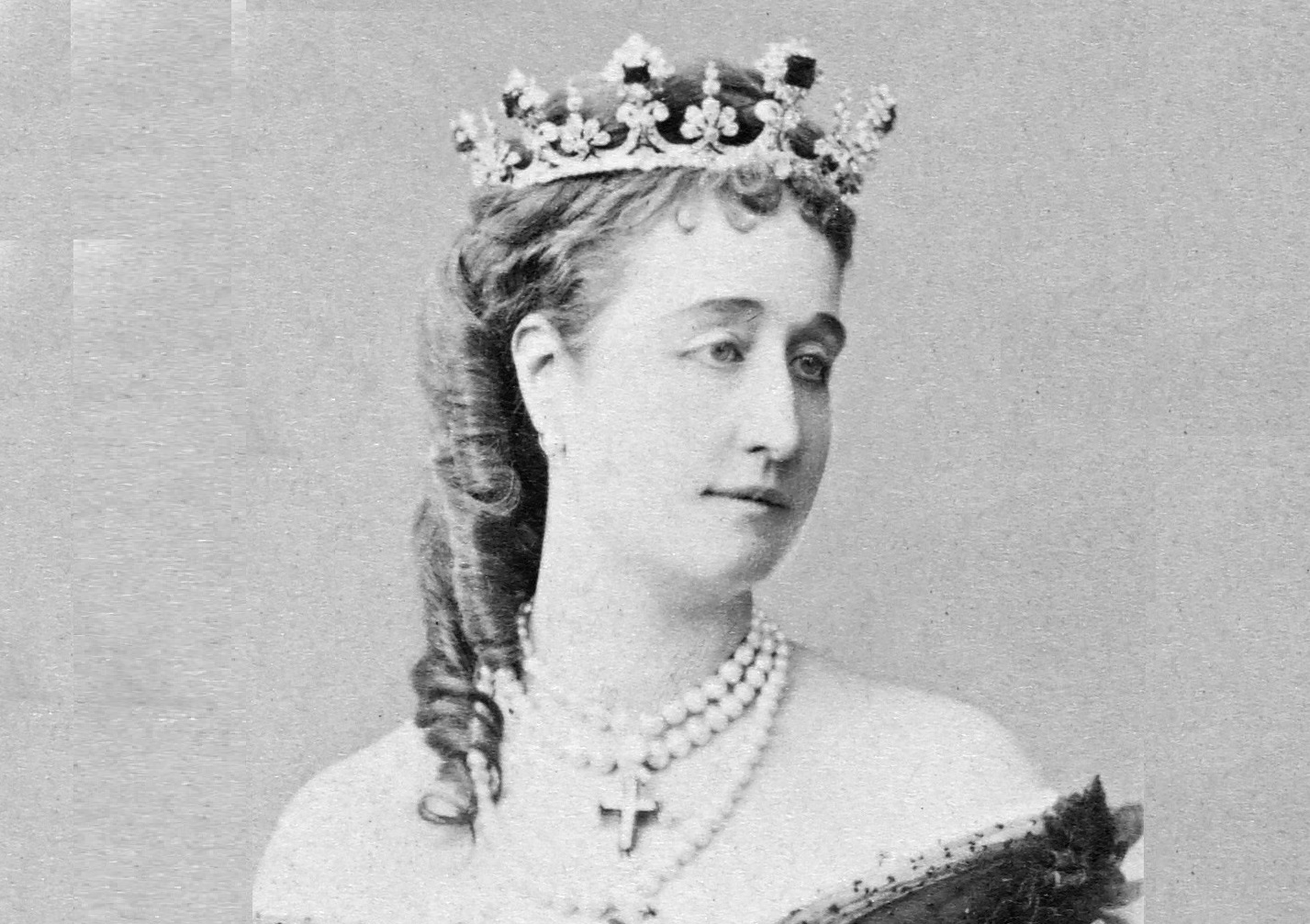 Sergei Luvovich Levitsky (Russian, 1819 - 1898, active Paris, France), Wikimedia Commons
Sergei Luvovich Levitsky (Russian, 1819 - 1898, active Paris, France), Wikimedia Commons
36. She Drove Her Ex-Husband To The Brink
The next year after her marriage, as La Paiva was still basking in the honeymoon phase, horrific news came to her doorstep. Whether she cared or not, her ex-husband Albino had just killed himself. She was free once, for all, and permanently from their brief time together. But that wasn’t all.
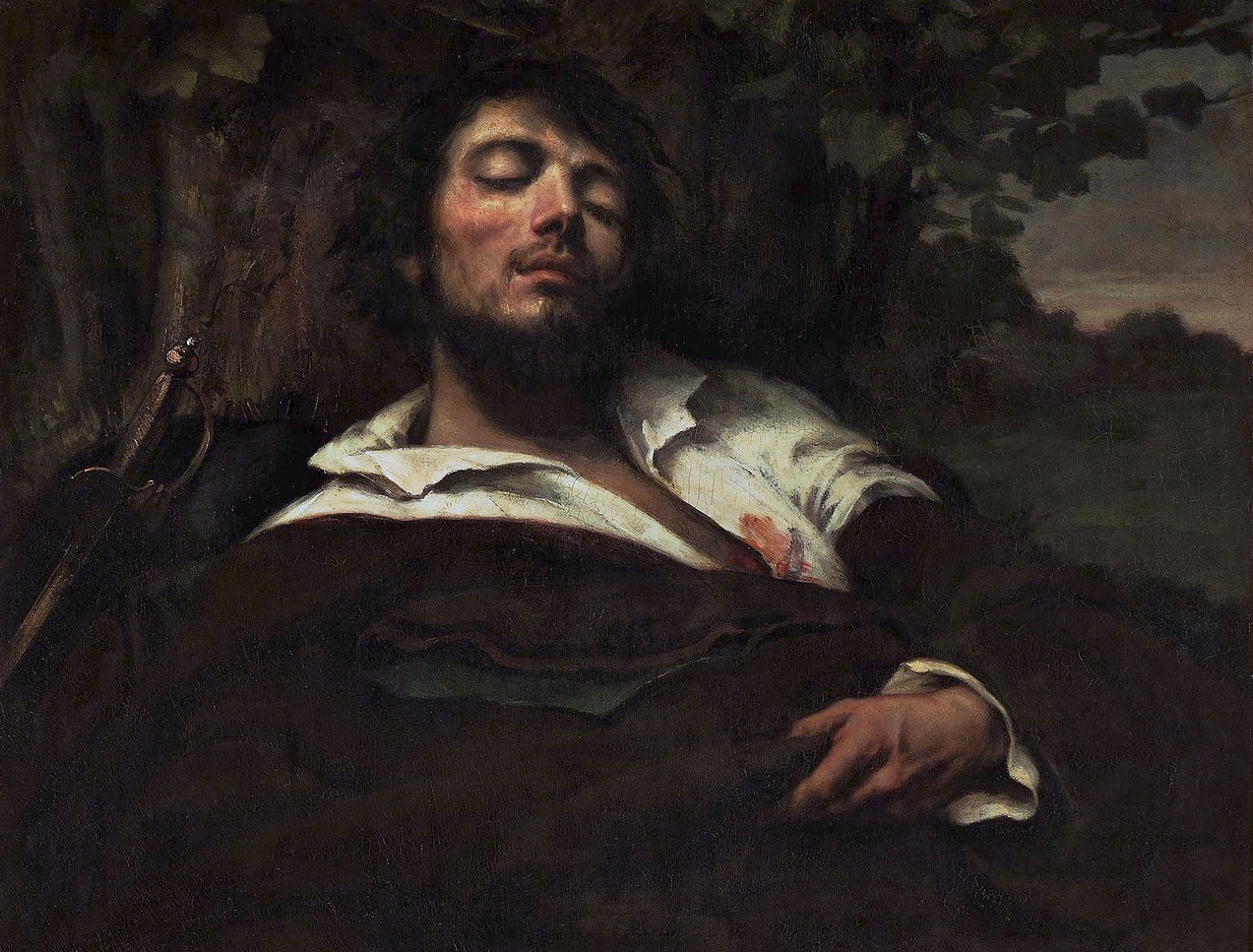 Gustave Courbet, Wikimedia Commons
Gustave Courbet, Wikimedia Commons
37. She Was A Man-Eater
Disturbingly, La Paiva had a real, if indirect, hand in her ex-husband’s demise. He had likely never gotten over her betrayal, and he had certainly never recovered from her financially. After trying for years to replenish his coffers through bad gambling and worst investments, he had finally taken his own life.
It’s likely the cold La Paiva barely spared him a thought. But karma was coming for her.
38. She Didn’t Age Well
By the time La Paiva married Donnersmarck, she had already suffered a crushing blow. Namely, the years had been very unkind to her beauty, which had always been of a rare breed anyway. In response, the courtesan began powdering her face even more heavily than before in the hopes that it would make her look younger. It had a much different effect.
39. She Looked Like A “Corpse”
In truth, La Paiva in her middle-aged years was a sight to behold—and not in a good way. At the age of 40, one commenter noted she was “painted and powdered like an old tightrope walker, [and] she has slept with everyone”. A decade later, two French diarists described in her visage “the terrible face of a painted corpse”.
For the courtesan, there was perhaps nothing worse than her beauty fading. Even so, worse was on the way.
40. She Fell From Grace
Right around this time, a new order came into France. The Franco-Prussian war ignited anti-German sentiment, and many people began to look upon La Paiva and her Prussian spouse with suspicion. More than that, courtesans had also fallen out of favor again in French high society, and La Paiva’s Jewish origins had never made her popular.
It was a perfect storm, and it was heading right for her.
41. The Public Booed Her
In 1871, the same year La Paiva made it official with Donnersmarck, her status plummeted in a brutal way. The public was so full of animosity toward her, they reportedly began hissing at her when she entered the opera house for a night of entertainment. The courtesan had gone from being the toast of the town to its scapegoat, right when her beauty was no longer her armor.
Then the vicious rumors really started.
42. The People Accused Her Of A Heinous Act
With her deep, rich networks across Europe and her Prussian husband, it wasn’t long before people were accusing La Paiva of being a German spy, planted in France to be a double agent. To be fair, the only flag she flew under was the gold standard—so if you paid her enough, I could see her engaging in a little betrayal.
It didn’t matter in the end, though, what the truth was. The people of France got their revenge.
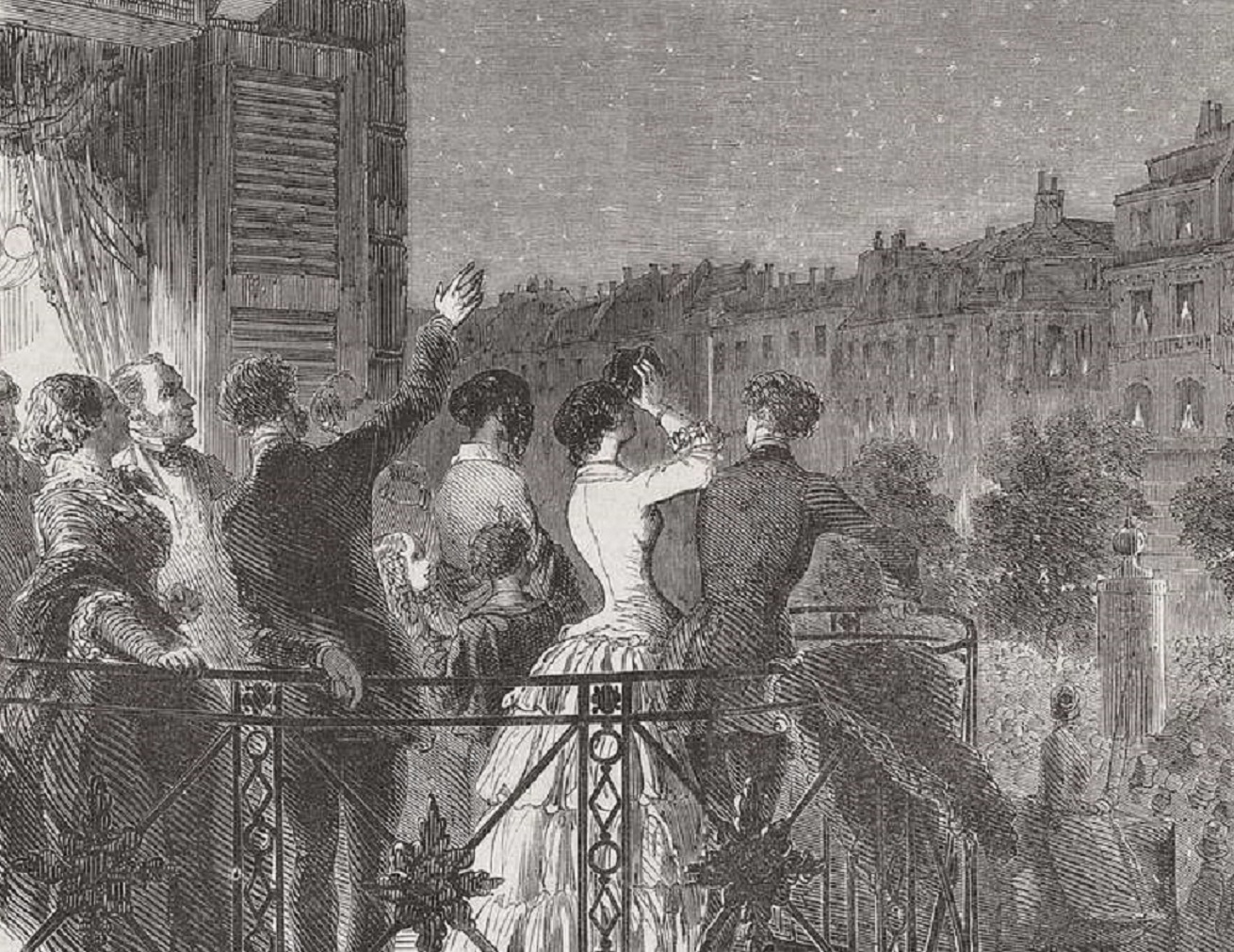 Brown University Library , Picryl
Brown University Library , Picryl
43. She Ran Away
In 1877, La Paiva and Donnersmarck finally left hostile France to settle in a massive castle in Silesia, in what is now Poland. But according to rumors, they didn’t quite go willingly—people whispered that the government had forced them to leave after suspecting them of espionage as well. It was a shameful end to her Paris life…but it got twistier.
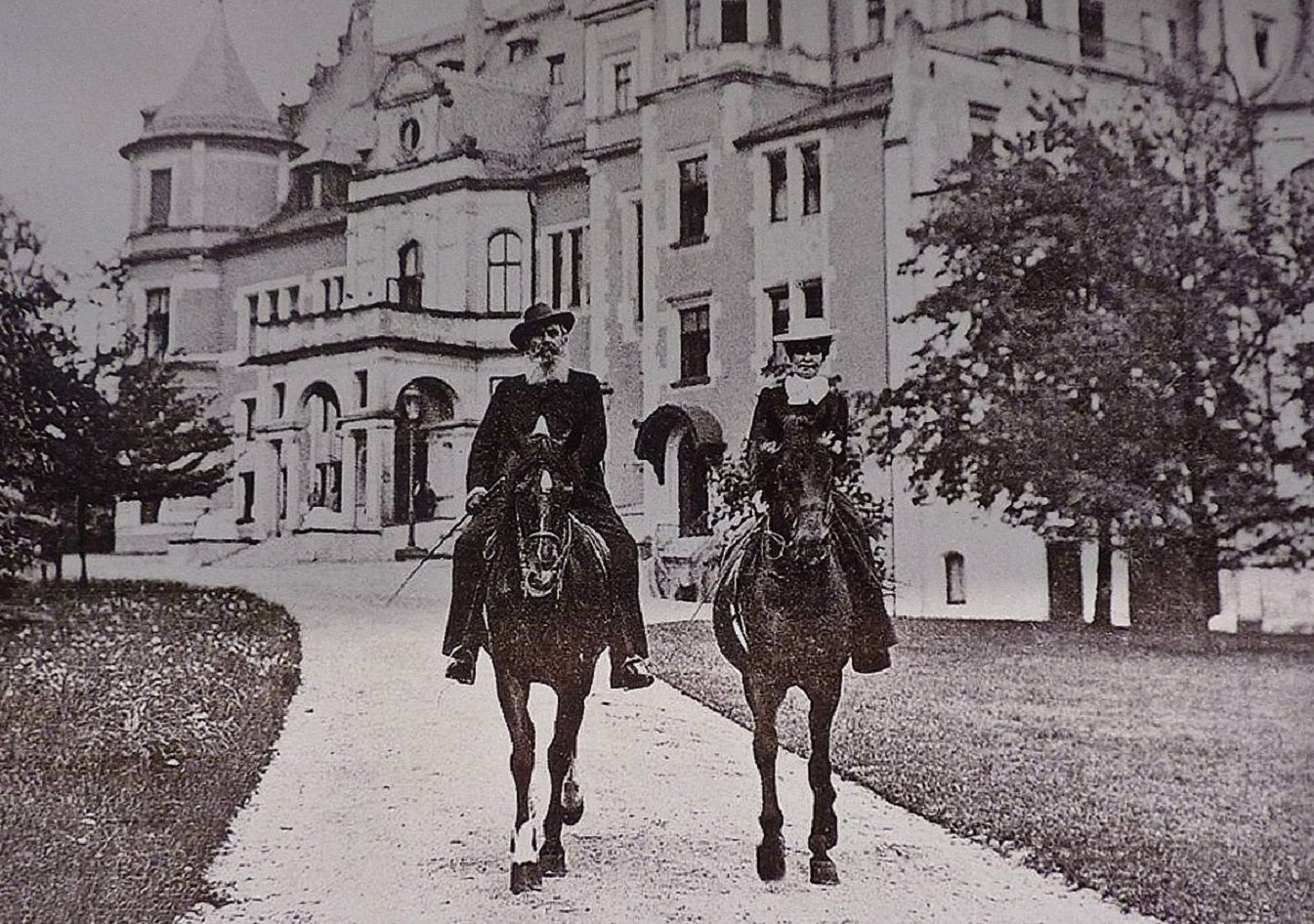 fotopolska.eu, Wikimedia Commons
fotopolska.eu, Wikimedia Commons
44. The Rumors May Have Been True
During this time, the details of La Paiva’s life are extremely suspect. German politician Otto von Bismarck was fairly buddy-buddy with Donnersmarck, and after the couple decamped to Silesia, Bismarck sometimes had Donnersmarck perform under-the-table political and financial deals for him. So, you know, maybe the whole spy thing was true.
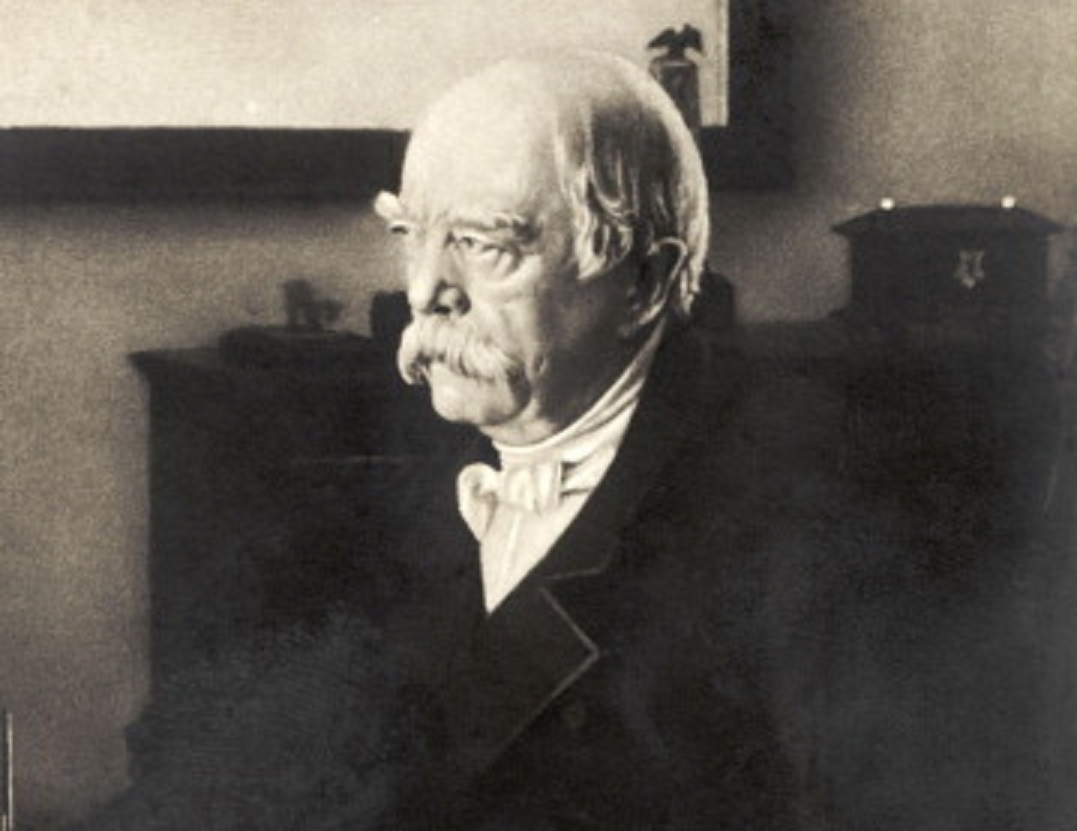 Unknown author , Wikimedia Commons
Unknown author , Wikimedia Commons
45. We Don’t Know What She Looked Like
Despite her immense impact on French culture at the time, we don’t have a reliable likeness of La Paiva. There are only a few suspect portraits of her in existence, as well as some photographs that are tantalizingly vague about what she really looked like. In many ways, however, this is also part of her allure—she wasn’t easily imitated, after all.
46. She Had “No Redeeming Feature”
In the end, La Paiva’s lasting legacy isn’t the scandal she caused as a courtesan during her heyday; it’s her utter ruthlessness when it came to getting what she wanted. One writer described her as the "one great courtesan who appears to have had no redeeming feature". Harsh, to be sure, but given her story, perhaps fair.
47. She Ended With A Whimper, Not A Bang
For the next decade, La Paiva aged away from the prying eyes of Paris, locked in her Silesian castle. Even so, it was a happy life by many accounts, and her much-younger husband remained devoted to her even as she hit her 60s and her health began to fail. But when her end came on January 21,1884, it all took a dark turn.
48. Her Husband Couldn’t Let Her Go
In the end, Donnersmarck’s devotion to his dearly departed wife turned very creepy. According to one report, he refused to bury her, since that would mean admitting she was really gone. Instead, he had someone inject her with embalming fluid, preserving her beauty for all time. Yes, that’s disturbing…but you haven’t seen anything yet.
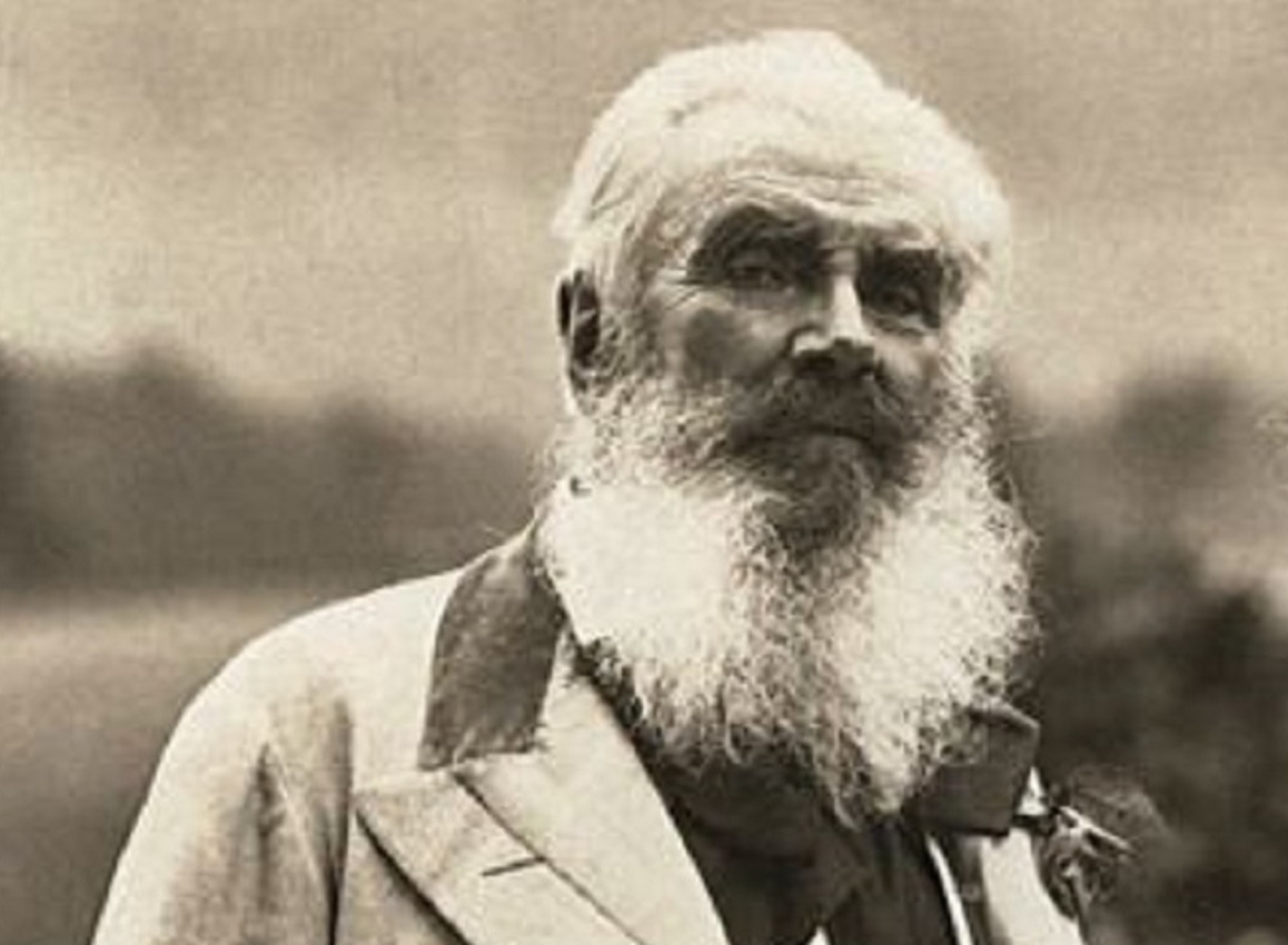 Erdmando, CC BY-SA 4.0 , Wikimedia Commons
Erdmando, CC BY-SA 4.0 , Wikimedia Commons
49. He Kept Her In The Attic
It wasn’t just that Donnersmarck insisted on embalming La Paiva’s body, it was also where he kept it. Since he was still insisting his beautiful wife couldn’t be buried, he had to put her corpse somewhere. His choice? His attic. It was some perverse version of the mad woman in the attic in Jane Eyre, and it was about to get a whole lot worse.
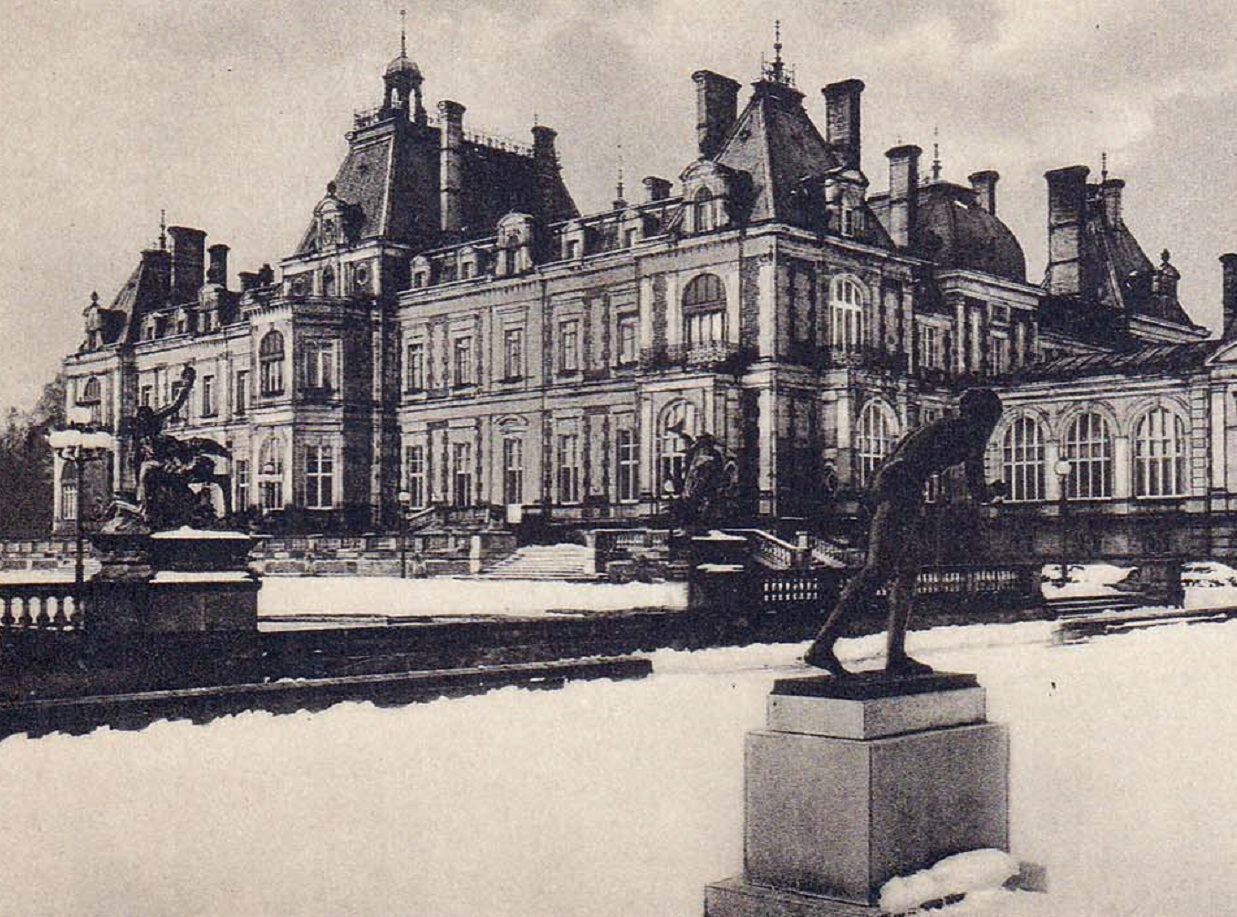 Unknown author , Wikimedia Commons
Unknown author , Wikimedia Commons
50. His New Wife Made A Shocking Discovery
Although Donnersmarck had a hard time getting over La Paiva, he eventually did, remarrying the Russian noblewoman Katharina Slepzow. Shortly into her marriage, she made a blood-curdling discovery. While going through the attic she found, you guessed it, the corpse of her predecessor. I’m assuming La Paiva’s ghost delighted in scaring her new rival.
 Unknown author , Wikimedia Commons
Unknown author , Wikimedia Commons
You May Also Like:
Hot-Blooded Facts About Lupe Vélez, The Mexican Spitfire
Sinful Facts About Penelope Rich, The Scandalous Countess of Devonshire
Peter Dinklage, Hollywood's Barrier Breaker

